|
If you only have a few days in Taiwan and you want to go somewhere outside of Taipei, you should definitely go to Taroko National Park. On an island full of mountains, rain forests, beaches, and abounding natural beauty, Taroko might just take the top spot as the most beautiful scenic area in Taiwan.
Taroko National Park is well known for its amazing marble cliffs and canyons carved out by the Liwu River. It is also a popular spot for hiking, rafting, and river tracing. If you have the time, come to the East coast and see it. If you don't have time, then make some time! History and Background: Taroko National Park is well known for its marble cliffs and canyons, and is also known as "The Marble Gorge." Millions of years ago, the rock we see today was sediment at the bottom of the Pacific Ocean, but oceanic and tectonic pressure turned it into limestone, and later into marble. Later the Eurasian plate was uplifted where Taiwan is today, and a gorge was cut out of the limestone thanks to the Liwu River. Taroko means "human being," from the Truku tribal language. Originally the Tupido Tribe settled in the area of what is now Tianxiang Taiti mesa. They built the Tupido Tribe Trail which was only 30 cm wide, and resided there until they were massacred by the Japanese in 1914. In 1917, the Japanese expanded the original trail made by the Tupido Tribe to 1.5 M and forced aboriginal tribesmen to carry goods along the trail to the east coast. This is now the Zhuilu Old Trail. Currently only 3km of the trail is open to the public. The Japanese created a national park in the Area in 1937, which was disestablished by the ROC in 1945, and then reenstated in as a national park in 1986. When to visit? Hualien is great year round, but it can get a little hot in the summer, and Typhoon season and heavy rain season lasts from about May to October. If you are afraid of the heat and rain then you can visit during winter when the temperatures are mild and the climate is usually dryer. Sponsored Links Where to stay? Most of the accommodation you will find is near the city center. If you only want to visit Hualien City and Taroko Gorge, you can consider booking a hotel near downtown, walking or cycling around the city, and taking a bus to Taroko Gorge. We have stayed at and recommend Dream Taiwan Homestay (Agoda / Booking.com / Expedia / Hotels.com), a high quality hostel for the money in downtown Hualien, Farglory Hotel (Agoda / Booking.com / Expedia / Hotels.com), right next to Farglory Ocean Park with amazing views of Hualien, and Goldenflower B&B (Agoda / Booking.com) in Yuli right next to Sixty Stone Mountain. You can find out where to stay in our Taiwan hotels guide or search for the best hotel deals in Taiwan here. How to get there: By Car: From Taipei, Take National Highway 5 to Yilan and then drive on the Suhua Highway 9 to Hualien. A few miles before Hualien City, the gorge will be on your right. By Train: Take the train to Hualien station, and from there you can rent a scooter or car, or take a tour bus to the gorge. For more travel information see here. You can book tickets to travel to Hualien via inter-city bus on Klook here. Book tickets via the normal train (TRA) on Klook here. Need travel insurance? Compare prices on Insubuy here. How to get around in Taroko Gorge: As always, we recommend renting a scooter as the best way to see Taiwan. However, you can also a great deal of Tainan by taking the train, inter-city bus, local bus, biking, or just walking. Getting around in a car is also a convenient option as there is plenty of parking pretty much everywhere in this less crowded county. By Bus: You can book a shuttle bus to Taroko Gorge from Hualien on Klook here. Scooter Rental: Looking for scooter rental in Hualien? You can search KKday here or Klook here to look for options. You can also check out our scooter rental guide here. Car Rental: If you are looking for car rentals in Hualien, you can also search Klook here or KKDay here. You can also check out our car rental guide here. Tours: You can find more tours and activities in Hualien such as Surfing, Paragliding, SUP / Paddle Boarding, Kayaking, Canoeing, River Tracing, River Rafting, Whale Watching, Snorkeling, Diving, ATV / 4-wheeling, Paintballing, Farm Dream Estates Zoo, Water Biking, Oyster Harvesting, Shrimp Harvesting, Indigenous Experience, Glamping, Cycling, Ziplining and much more on Klook here or KKday here. You can also book Wifi and SIM cards for Taiwan on Gigago here. Just to let you know, if you book using the links above, we get some commission at no cost to you, and you can help support our blog. You can click here to receive $5 USD on your first Klook purchase. Hours: 8:30AM-5PM (Zhuilu old trail is open from 7AM to 10PM). Flying a Drone? Apply for a drone permit here. Price: Free! (Except Zhuilu old trail, which is 200 NT per adult. See below for more info.) Map: Please see below:
0 Comments
If you only have a few days in Taiwan and you want to go somewhere outside of Taipei, you should definitely go to Taroko Gorge. On an island full of mountains, rain forests, beaches, and abounding natural beauty, Taroko Gorge might just take the top spot as the most beautiful scenic area in Taiwan.
Taroko National Park is well known for its amazing marble cliffs and canyons carved out by the Liwu River. It is also a popular spot for hiking, rafting, and river tracing. If you have the time, come to the East coast and see it. If you don't have time, then make some time! History and Background: Taroko National Park is well known for its marble cliffs and canyons, and is also known as "The Marble Gorge." Millions of years ago, the rock we see today was sediment at the bottom of the Pacific Ocean, but oceanic and tectonic pressure turned it into limestone, and later into marble. Later the Eurasian plate was uplifted where Taiwan is today, and a gorge was cut out of the limestone thanks to the Liwu River. Taroko means "human being," from the Truku tribal language. Originally the Tupido Tribe settled in the area of what is now Tianxiang Taiti mesa. They built the Tupido Tribe Trail which was only 30 cm wide, and resided there until they were massacred by the Japanese in 1914. In 1917, the Japanese expanded the original trail made by the Tupido Tribe to 1.5 M and forced aboriginal tribesmen to carry goods along the trail to the east coast. This is now the Zhuilu Old Trail. Currently only 3km of the trail is open to the public. The Japanese created a national park in the Area in 1937, which was disestablished by the ROC in 1945, and then reenstated in as a national park in 1986. When to visit? Hualien is great year round, but it can get a little hot in the summer, and Typhoon season and heavy rain season lasts from about May to October. If you are afraid of the heat and rain then you can visit during winter when the temperatures are mild and the climate is usually dryer. Currently the park is closed due to damage from the April 3rd, 2024 earthquake. Where to stay? Most of the accommodation you will find is near the city center. If you only want to visit Hualien City and Taroko Gorge, you can consider booking a hotel near downtown, walking or cycling around the city, and taking a bus to Taroko Gorge. We have stayed at and recommend Dream Taiwan Homestay (Agoda / Booking.com / Expedia / Hotels.com), a high quality hostel for the money in downtown Hualien, Farglory Hotel (Agoda / Booking.com / Expedia / Hotels.com), right next to Farglory Ocean Park with amazing views of Hualien, and Goldenflower B&B (Agoda / Booking.com) in Yuli right next to Sixty Stone Mountain. You can find out where to stay in our Taiwan hotels guide or search for the best hotel deals in Taiwan here. How to get there: By Car: From Taipei, Take National Highway 5 to Yilan and then drive on the Suhua Highway 9 to Hualien. A few miles before Hualien City, the gorge will be on your right. By Train: Take the train to Hualien station, and from there you can rent a scooter or car, or take a tour bus to the gorge. For more travel information see here. You can book tickets to travel to Hualien via inter-city bus on Klook here. Book tickets via the normal train (TRA) on Klook here. Need travel insurance? Compare prices on Insubuy here. How to get around in Taroko Gorge: As always, we recommend renting a scooter as the best way to see Taiwan. However, you can also a great deal of Tainan by taking the train, inter-city bus, local bus, biking, or just walking. Getting around in a car is also a convenient option as there is plenty of parking pretty much everywhere in this less crowded county. By Bus: You can book a shuttle bus to Taroko Gorge from Hualien on Klook here. Scooter Rental: Looking for scooter rental in Hualien? You can search KKday here or Klook here to look for options. You can also check out our scooter rental guide here. Car Rental: If you are looking for car rentals in Hualien, you can also search Klook here or KKDay here. You can also check out our car rental guide here. Tours: You can find more tours and activities in Hualien such as Surfing, Paragliding, SUP / Paddle Boarding, Kayaking, Canoeing, River Tracing, River Rafting, Whale Watching, Snorkeling, Diving, ATV / 4-wheeling, Paintballing, Farm Dream Estates Zoo, Water Biking, Oyster Harvesting, Shrimp Harvesting, Indigenous Experience, Glamping, Cycling, Ziplining and much more on Klook here or KKday here. You can also book Wifi and SIM cards for Taiwan on Gigago here. Just to let you know, if you book using the links above, we get some commission at no cost to you, and you can help support our blog. You can click here to receive $5 USD on your first Klook purchase. Hours: 8:30AM-5PM (Zhuilu old trail is open from 7AM to 10PM). Currently the park and Zhuilu trail are closed due to damage from the April 3rd, 2024 earthquake. Flying a Drone? Apply for a drone permit here. Price: Free! (Except Zhuilu old trail, which is 200 NT per adult. See below for more info.) Map: Please see below:
Taiwan's East Rift Valley has some of the most breathtaking scenery in Taiwan. It has towering mountains and vast tracks of flat rice fields. There are also amazing rivers, canyons, and waterfalls to explore. It is also home to Taiwan's International Balloon Festival. There is something for everyone in this area of Taiwan.
When to visit? The East Rift Valley is great year round, but it can get a little hot in the summer, and Typhoon season and heavy rain season last from about May to October. If you are afraid of the heat and rain then you can visit during winter when the temperatures are mild and the climate is usually dryer. Where to stay? Most of the accommodation you will find is near the city centers. If you only want to visit Hualien City or Taitung City, you can consider booking a hotel near downtown, walking or cycling around the city, and taking a bus to sites further away. We have stayed at and recommend Dream Taiwan Homestay (Agoda / Booking.com / Expedia / Hotels.com), a high quality hostel for the money in downtown Hualien, Farglory Hotel (Agoda / Booking.com / Expedia / Hotels.com), right next to Farglory Ocean Park with amazing views of Hualien, and Goldenflower B&B (Agoda / Booking.com) in Yuli right next to Sixty Stone Mountain. In Taitung have stayed at and recommend the Papago International Resort in Chishang, which is a five star hotel with private villas with pools for each room, and Mountain and Ocean B & B in Taimali, which is a quiet and affordable B&B right next to the beach. You can find out where to stay in our Taiwan hotels guide or search for the best hotel deals in Taiwan here. How to get to the East Rift Valley? You can book tickets to travel to the East Rift Valley via inter-city bus on Klook here. Book tickets via the normal train (TRA) on Klook here. Need travel insurance? Compare prices on Insubuy here. How to get around the East Rift Valley: As always, we recommend renting a scooter as the best way to see Taiwan. However, you can also a great deal of Tainan by taking the train, inter-city bus, local bus, biking, or just walking. Getting around in a car is also a convenient option as there is plenty of parking pretty much everywhere in this less crowded county. Scooter Rental: Looking for a scooter rental in Hualien or Taitung? You can search KKday here or Klook here to look for options. You can also check out our scooter rental guide here. Car Rental: If you are looking for car rentals in Hualien or Taitung, you can also search Klook here or KKDay here. You can also check out our car rental guide here. Tours: You can find more tours and activities in Hualien such as Surfing, Paragliding, SUP / Paddle Boarding, Kayaking, Canoeing, River Tracing, River Rafting, Whale Watching, Snorkeling, Diving, ATV / 4-wheeling, Paintballing, Farm Dream Estates Zoo, Water Biking, Oyster Harvesting, Shrimp Harvesting, Indigenous Experience, Glamping, Cycling, Ziplining and much more on Klook here or KKday here. You can also book Wifi and SIM cards for Taiwan on Gigago here. Just to let you know, if you book using the links above, we get some commission at no cost to you, and you can help support our blog. You can click here to receive $5 USD on your first Klook purchase.
Taiwan's East Coast has the most beautiful scenery in Taiwan. From the deepest marble gorge in the world to outer islands, mountains, rivers, and huge sea cliffs, there are unmissable natural wonders for you to explore. In addition, there are endless outdoor activities and water sports that you can take part in here.
When to go: The best time to go they say is around May when it is not too hot and there are no northeasterly winds or typhoons. The typhoon season lasts from around June to October. The busy season is during summer break from June to August, during which time it can be hard to book a hostel or airplane ticket. Winter is the less crowded season, but the water will be colder, there will be constant wind (which could cancel transportation), and it will rain more often. How to get there: By Plane: Traveling to Taitung or Hualien by plane is the fastest way to get there. The trip only takes one hour from Taipei, and there are planes that leave daily through Mandarin Airlines and Uni Air. From Taitung, where you can switch to Saily Air which will take you the rest of the way to Green Island or Orchid Island. A plane ticket to Taitung takes about one hour and costs about 5000 NT per round trip. You can book discount tickets to Taitung on KKday here. By Train: The train ride from Taipei to Taitung takes 3-4 hours and costs about 800 NT one way. Book tickets via the normal train (TRA) on Klook here. By Bus: Busses leave hourly from Taipei to the East Coast. A bus from Taipei to Hualien now only takes about 2.5 hours. You can book tickets to travel to Taiwan's East Coast via inter-city bus on Klook here. By Bicycle: Cycling is the best way to enjoy Taiwan's landscapes if you have the time and energy. Looking for bicycle rentals in Taiwan? You can search on KKday here and search for tours on Klook here. You can also check out our Taiwan cycling guide here. By Car/Scooter: From Taipei, a car ride to Taitung takes about six hours, and a scooter ride takes about eight hours. You can rent a scooter on Klook or KKday. Scooter rental is about 300 NT per day. You can check out our scooter rental guide here. You can also rent a car for about 1500 NT per day. You can rent a car on Qeeq here or Klook here. You can hire a driver or taxi, and you can charter a car here. You can check out our car rental guide here. Tours: There are many tours and activities available on Taiwan's East Coast such as snorkeling, diving, SUPing, Surfing, Speed Boating, Glamping, River tracing, Paragliding, Kayaking, Canoeing, River Tracing, River Rafting, River Tubing, Pack Rafting, Whale Watching, ATV / 4-wheeling, Paintballing, Water Biking, Glamping, Cycling, Ziplining, Horse Riding, and many others, which you canbook through Klook here or KKday here. Accommodation: Looking for a hotel? We recommend booking through Agoda here, which provides the best quality selection of accommodation on the islands. Yilan: We have stayed at and recommend Ying Shih Guest House, a resort in Datong Township near Taipingshan and Fan Fan Hot Spring, and Jiaosi Hotspring Hotel, a hotel with hot springs in each room. We have also stayed at Toucheng Leisure Farm, a recreational farm and experience center in Toucheng (you can book on Agoda here). Hualien: We also have stayed at and recommend Dream Taiwan Homestay (Agoda / Booking.com), a high quality hostel for the money in downtown Hualien, Farglory Hotel (Agoda / Booking.com), right next to Farglory Ocean Park with amazing views of Hualien, and Goldenflower B&B (Agoda / Booking.com) in Yuli right next to Sixty Stone Mountain. You can find out where to stay in our Taiwan hotels guide or search for the best hotel deals in Taiwan here. Taitung: We have stayed at and recommend the Papago International Resort in Chishang, which is a five star hotel with private villas with pools for each room, and Mountain and Ocean B & B in Taimali, which is a quiet and affordable B&B right next to the beach. Looking for scooter rental in Taiwan? Click here or here to search for options. If you are looking for car rentals, you can also search here. You can also book Wifi and SIM cards for Taiwan on Gigago here. Just to let you know, if you book using the links above, we get some commission at no cost to you, and you can help support our blog. You can click here to receive $5 USD on your first Klook purchase.
Hualien is the largest county in Taiwan and is considered by many to be the most beautiful. It includes a breathtaking coastline along the Pacific Ocean, including cliffs thousands of meters high, marble gorges, fertile valleys, and a large section of Taiwan's central mountain range. Hualien is simply a must-stop location on your trip to Taiwan.
Historical Background Hualien was first inhabited by Sakiraya aborigines and was known as Kilai. Later the Spanish came here to pan for gold for a brief period. Afterward, the first Han Chinese settlers came to the area in 1851 and named the place Hualien after the swirling delta of the Liwu River. During the Japanese era, many Japanese people were relocated here to develop agriculture. Now Hualien is the key population center on Taiwan's East Coast. When to visit? Hualien is great year round, but it can get a little hot in the summer, and Typhoon season and heavy rain season last from about May to October. If you are afraid of the heat and rain then you can visit during winter when the temperatures are mild and the climate is usually dryer. Where to stay? The best hostel I’ve ever stayed at is “When Happiness Knock Your Door” “幸福來敲門” in Hualien. The hostess will go out of her way to make you comfortable and her rooms are kept extremely nice. Also it was one of the few hostels I’ve ever been to that has an elevator. Her price is well below the quality you will enjoy. She has almost a perfect rating on Booking.com and Agoda. You can book When Happiness Knock Your Door on Agoda here, Booking.com here, Hotels.com here, Expedia here, Kayak here, TripAdvisor here, or Klook here. We have also stayed at and recommend Dream Taiwan Homestay (Agoda / Booking.com / Expedia / Hotels.com), a high quality hostel for the money in downtown Hualien, Farglory Hotel (Agoda / Booking.com / Expedia / Hotels.com), right next to Farglory Ocean Park with amazing views of Hualien, and Goldenflower B&B (Agoda / Booking.com) in Yuli right next to Sixty Stone Mountain. You can find out where to stay in our Taiwan hotels guide or search for the best hotel deals in Taiwan here. How to get to Hualien? You can book tickets to travel to Hualien via inter-city bus on Klook here. Book tickets via the normal train (TRA) on Klook here. Need travel insurance? Compare prices on Insubuy here. How to get around in Hualien: As always, we recommend renting a scooter as the best way to see Taiwan. However, you can also a great deal of Tainan by taking the train, inter-city bus, local bus, biking, or just walking. Getting around in a car is also a convenient option as there is plenty of parking pretty much everywhere in this less crowded county. Scooter Rental: Looking for a scooter rental in Hualien? You can search KKday here or Klook here to look for options. You can also check out our scooter rental guide here. Car Rental: If you are looking for car rentals in Hualien, you can also search Klook here or KKDay here. You can also check out our car rental guide here. By Bicycle: Cycling is the best way to enjoy Taiwan's landscapes if you have the time and energy. Looking for bicycle rentals in Taiwan? You can search on KKday here and search for tours on Klook here. You can also check out our Taiwan cycling guide here. Tours: You can find more tours and activities in Hualien such as Surfing, Paragliding, SUP / Paddle Boarding, Kayaking, Canoeing, River Tracing, River Rafting, Whale Watching, Snorkeling, Diving, ATV / 4-wheeling, Paintballing, Farm Dream Estates Zoo, Water Biking, Oyster Harvesting, Shrimp Harvesting, Indigenous Experience, Glamping, Cycling, Ziplining and much more on Klook here or KKday here. You can also book Wifi and SIM cards for Taiwan on Gigago here. Just to let you know, if you book using the links above, we get some commission at no cost to you, and you can help support our blog. You can click here to receive $5 USD on your first Klook purchase. Map: Please see the map below for the areas we will cover in the blog.
Sixty Stone mountain (aka Liushidan Mountain) is a beautiful flower and mountain landscape on the eastern flank of the eastern rift valley in Hualien County. The annual Daylily flower blooms and amazing views of the Eastern Rift Valley attract thousands of tourists each summer. Some of the picturesque and beautiful views anywhere in Taiwan can be seen from this mountain.
Background: The main crop on Sixty Stone Mountain is the Orange Daylily (aka tawny dayliliy, hemerocallis, golden needle flower, etc.). Orange Daylily is a nutrient and iron-rich plant, and is traditionally used as a garnish, spice, and preservative. In addition it is also added as raw materiel for rice paper and Chines medicine. You can buy dried bags of the stuff all over the mountain and surrounding areas. According to some of the locals, Sixty Stone Mountain gets its name from the fact that instead of producing 50 stones (or dan, measure of flowers) per field, the fields on this mountain can produce 60 stones. Other people say that it is because during the Japanese Era, all the trees were cut down and there were 60 large boulders left on the mountain. Nowadays the Mountain is a major tourist attraction, and has been highly marketed by the Taiwan tourism bureau. You can find pictures from this mountain on almost any Taiwan tourism brochure. Hours: Technically open 24/7. When to go: We suggest going during the Orange Daylily flowering season, which is from about July to September. If you go from 3-5 PM you should see an awesome view of the sunset if the weather is good. How to get there: BY Car/Scooter: Take highway 9 south from Hualien. When you reach Dongzhu, there will be a sign to Sixty Stone Mountain just after the police station. The road up the mountain is small and closes after 6:00 PM. Only cars, small vans, and scooters are allowed up the road. There are many tour groups such as KKday here and Klook here that offer van rides up the mountain. Looking for a scooter rental in Hualien? You can search KKday here or Klook here to look for options. You can also check out our scooter rental guide here. If you are looking for car rentals in Hualien, you can also search Klook here or KKDay here. You can also check out our car rental guide here. Where to stay? Most of the accommodation you will find is near the city center. If you only want to visit Hualien City and Taroko Gorge, you can consider booking a hotel near downtown, walking or cycling around the city, and taking a bus to Taroko Gorge. We have stayed at and recommend Dream Taiwan Homestay (Agoda / Booking.com), a high quality hostel for the money in downtown Hualien, Farglory Hotel (Agoda / Booking.com), right next to Farglory Ocean Park with amazing views of Hualien, and Goldenflower B&B (Agoda / Booking.com) in Yuli right next to Sixty Stone Mountain. We have also stayed at and recommend the Papago International Resort in Chishang (you can book on Agoda here / Booking.com here), which is a five star hotel with private villas with pools for each room, and Mountain and Ocean B & B in Taimali (you can book on Agoda here / Booking.com here), which is a quiet and affordable B&B right next to the beach. You can find out where to stay in our Taiwan hotels guide or search for the best hotel deals in Taiwan here. Tours: You can find more tours and activities in Hualien such as Surfing, Paragliding, SUP / Paddle Boarding, Kayaking, Canoeing, River Tracing, and much more on Klook here or KKday here. Map: Please see below:
This month marks the 10th anniversary of this blog, so to celebrate I am making a blog tracing back our first round-island trip lasting 14 days and 13 nights made in 2014. During this journey we rented a car in Taipei, and circled Taiwan clockwise, visiting Taroko Gorge, Kenting, Xiaoliuqiu, Alishan, Sun Moon Lake, and many more places along the way. I am the kind of guy who likes to bask in nostalgia, but also I hope that laying out this experience in the open as well as the lessons we learned about travel in Taiwan along the way (and what I know now in 2024) will be helpful to other foreigners coming to Taiwan.
Some background on why this trip happened: This was not our first trip to Taiwan. Scott and I had been Latter-day Saint missionaries in Taiwan from 2011 to 2012 in the Taichung Mission, which covers Taichung to Pingtung but nothing north or east of that. We still had a lot of friends in Taiwan that we missed, we missed Taiwanese food, and there were the entire north and east parts of the island for us to explore. We decided it would be a once-in-a-lifetime opportunity to tour Taiwan now because later on in our lives we would likely have work and family obligations that would not allow us to take a 14-day trip around Taiwan. Being poor college students at the time, we had a very limited budget (for reference, I was making 700 USD a month as a janitor and I could only save about half of that after rent and food). Originally another friend planned to come with us, but he backed out because he got married. Scott's brother Matt decided to come along too. Just so you know, Scott and I know Chinese, but Matt doesn't. It makes traveling easier to know the language but you can still get by in Taiwan without it. The Plane Ride: We took the cheapest flight available on Shenzhen Airlines, which had many flights for cheap to the US at the time. For 700 USD we bought a round trip from LA to Beijing to Taipei and back. Renting a car in Taiwan: Before we began our trip, we planned on rounding the island by Scooter. This can be a fun way to explore Taiwan. As a side note, you can book a Motorcycling experience on Klook here, or a half-day Motorbike Tour on KKday here. If you are looking for a multi-day, in-depth tour of Taiwan via motorbike, we recommend contacting [email protected] who schedules regular 10-day motorbike tours of Taiwan. The tour guide is a long-term expat in Taiwan who has been giving riding tours of Taiwan for 16 years now. You can also check out our scooter rental guide here. After crunching the numbers, we figured that we could rent a car for just as cheap as three scooters, and we wouldn't have to worry about rain or luggage. A scooter would be 300 NT per day, and for three people 900 NT per day, but we found a car rental place that would rent us a small Nissan March for 700 NT a day (that car company was called Good Cars 固得汽車 in Zhonghe, you can find their information in our Taiwan Car Rental Guide here). After arriving at Taoyuan International Airport, we took a bus to Taipei and made our way to Zhonghe at a friend's house and picked up the rental car. At the end of the trip, we found the price was a few thousand NT more than we expected because of highway tolls (about 1.5 NT per kilometer). SIM Card: I bought a pre-paid SIM card from Taiwan Mobile for 500 TWD that lasted the whole trip. I think it was only a few GB of data, but I had a crappy phone and was not using much data. Map: Check out a map of places we visited on this trip below:
Zhuilu Old Trail (aka Jhueilu/Zhuilu Old Road) is known as "the best day hike in Taiwan" and has a trail on "the No. 1 cliff in east Asia." It is for sure one of the most beautiful and exciting hiking trails in Taiwan. It features a vertical cliff section with amazing views 500 meters above the world's deepest marble gorge (Taroko Gorge).
History: The Zhuilu Old Trail was created hundreds of years ago by the Truku indigenous people to connect their villages in Taroko Gorge and the central mountain range. Originally the cliff sections of the trail were just 30 cm wide! These indigenous people remained basically autonomous and undisturbed until the Japanese occupation of Taiwan. However after conflicts such as the Xincheng incident in 1896 and the Weili Incident in 1906, where combined more than 50 Japanese people were killed by indigenous warriors, the Japanese decided to tighten control of the mountain aborigines and natural resources in the area, and started the Truku War. The war lasted from May-August 1914, and in the process the Japanese forced indigenous men to widen the Zhuilu Trail to 1.5 meters so that they could transport artillery through the mountainous terrain. 37 people died during this widening process during and after the war, which included using dynamite to blast open the rock while only using ropes. The Truku lost the war, which included 3,000-5,000 indigenous warriors with modern weapons pitted against a Japanese fighting force of over 10,000. The Japanese lost over 300 men in the fight. After the war, the Japanese tried to dismantle their culture by scattering the people, preventing them from hunting, and forcing the children to attend Japanese schools. The Japanese then built the Old Cross-Hehuan Mountain Road which stretched 145 KM from Taroko Gorge to Wushe in Nantou from 1914 to 1933, with the Zhuilu Old Trail as part of it. They set up police stations/outposts along the trail as well, including Badagang Village which had a school, hospital, and inns for travelers. After the ROC took control of Taiwan, the trail was disused except for some expert hikers, and the Japanese police outposts were abandoned. After the 921 earthquake in 1999, the trail was closed for nine years until 2008. At around 2016 (probably after a typhoon), the 7KM after the Zhuilu Cliffs were closed off, so now the only walk-able part of the trail is 3.1 KM long from Swallow Grotto to the Zhuilu Cliff Outpost. It doesn't seem like this part of the trail will reopen soon. The cliff section of the trail is 750 meters above sea level, and nearly 500 meters above the valley floor. The distance between these cliffs and the cliffs on the opposite side of the gorge is only about 200 meters. The mountain that the cliffs are part of rises 1600 meters above sea level, and over 1000 meters above the valley floor, and is made completely of marble. Hours: Currently the trail is closed due to damage from the April 3rd, 2024 earthquake. Must enter between 7 AM and 10 AM the day of the permit (unless the gorge is closed due to typhoon/natural disaster) Permits Required: Only a park access permit is required. You can apply for a permit in English here. Only 96 people are allowed on weekdays and 156 people on weekends and holidays. Police permits are no longer required for this trail. Drones: Please note that if you want to fly a drone in Taroko National Park, you need to apply for a permit at least seven days in advance. You can apply to fly a drone (Chinese only) here. Price: 200 NT per person Duration: 6.2 Km round trip 500 meter elevation gain About 6 hours The trail is 3.1 KM one way to the Zhuilu Cliff Outpost, and gains 500 meters in elevation. It took me (one person with only one 30 minute break to fly a drone) three hours there and back (I was told this is a very fast pace). Some people say that it takes an average of six hours there and back. If you are taking people that are not in shape, expect to take most of the day hiking. When to go: On a sunny dry day. The rocks can get slippery and a fall on some of the trails could kill you. But if you are careful and bring proper hiking boots and gear, hiking on a wet day should be fine. Avoid typhoons and heavy rains at all costs. There gorge will close during typhoons anyway. Typhoon season lasts from May to October. Other than that, this hike is great year round. Need travel insurance? Compare prices on Insubuy here. Where to stay? Most of the accommodation you will find is near the city center. If you only want to visit Hualien City and Taroko Gorge, you can consider booking a hotel near downtown, walking or cycling around the city, and taking a bus to Taroko Gorge. We have stayed at and recommend Dream Taiwan Homestay (Agoda / Booking.com / Expedia / Hotels.com), a high quality hostel for the money in downtown Hualien, Farglory Hotel (Agoda / Booking.com / Expedia / Hotels.com), right next to Farglory Ocean Park with amazing views of Hualien, and Goldenflower B&B (Agoda / Booking.com) in Yuli right next to Sixty Stone Mountain. You can find out where to stay in our Taiwan hotels guide or search for the best hotel deals in Taiwan here. You can also book Wifi and SIM cards for Taiwan on Gigago here. How to get there: By Train/Bus: Take the TRA to Hualien Station, and then switch to the Hualien Bus 1133A. Get off at Swallow Grotto (Yanzikou 燕子口). Also you can take the TRA to Xincheng Station and take Taroko Bus 302. You can book tickets to travel to Hualien via inter-city bus on Klook here. Book tickets via the normal train (TRA) on Klook here. By Car/Scooter: Go west on the Central Cross Island Highway until you reach swallow grotto after Xipan Tunnel. There is only parking near Jinheng Park (靳珩公園) 500 meters down the road from the trail entrance. Looking for a scooter rental in Hualien? You can search KKday here or Klook here to look for options. You can also check out our scooter rental guide here. If you are looking for car rentals in Hualien, you can also search Klook here or KKDay here. You can also check out our car rental guide here. Tours: You can book a tour of Zhuilu Old Trail on Klook here or KKday here. Map: For the location of the start of the trail, please see below:
The Qingshui Cliffs in Taroko National Park on the coast of Hualien are some of the most spectacular geological features in the country, and the world. The tallest peak on the cliffs is 2,408 meters (7,900 feet) above sea level, and drops straight into the Pacific Ocean. It is a spectacular sight to behold.
Background: Taroko National Park is well known for its marble cliffs and canyons, and is also known as "The Marble Gorge." Millions of years ago, the rock we see today was sediment at the bottom of the Pacific Ocean, but oceanic and tectonic pressure turned it into limestone, and later into marble. Later the Eurasian plate was uplifted where Taiwan is today, and the cliffs were lifted out of the ocean. The cliffs are subject to constant erosion and rockslides are common. The cliffs are roughly 12 KM long and rise to over 2400 meters. They are a popular scenic stop along the Suhua highway that connects Yiland and Hualien. Hours: 24/7 Price: Free: When to visit? Hualien is great year round, but it can get a little hot in the summer, and Typhoon season and heavy rain season last from about May to October. If you are afraid of the heat and rain then you can visit during winter when the temperatures are mild and the climate is usually dryer. Where to stay? Most of the accommodation you will find is near the city center. If you only want to visit Hualien City and Taroko Gorge, you can consider booking a hotel near downtown, walking or cycling around the city, and taking a bus to Taroko Gorge. We have stayed at and recommend Dream Taiwan Homestay (Agoda / Booking.com / Expedia / Hotels.com), a high quality hostel for the money in downtown Hualien, Farglory Hotel (Agoda / Booking.com / Expedia / Hotels.com), right next to Farglory Ocean Park with amazing views of Hualien, and Goldenflower B&B (Agoda / Booking.com) in Yuli right next to Sixty Stone Mountain. You can find out where to stay in our Taiwan hotels guide or search for the best hotel deals in Taiwan here. You can also book Wifi and SIM cards for Taiwan on Gigago here. Need travel insurance? Compare prices on Insubuy here. How to get there: By Car/Scooter: From Hualien, Take highway 9 north until you reach the Qingshui Cliff lookout. There are actually a number of places to see the cliffs. Looking for a scooter rental in Hualien? You can search KKday here or Klook here to look for options. You can also check out our scooter rental guide here. If you are looking for car rentals in Hualien, you can also search Klook here or KKDay here. You can also check out our car rental guide here. By Bus: There is no public bus to the cliffs. You will have to rent a scooter or take a tour bus. Tours and Activities: You can book a SUP or kayak experience at Qingshui Cliffs and more on Klook here and KKday here. You can book tickets to travel to Hualien via inter-city bus on Klook here. Book tickets via the normal train (TRA) on Klook here. Map: See below:
Jiqi Beach in Fengbin Township of Hualien County is one of the best surfing spots in Taiwan. This is one of the few sandy beaches on the east coast between Hualien and Taitung. It is definitely worth a visit if you are looking for an exquisite and less crowded beach.
Background: On both sides of the beach are volcanic rock formations, while the middle is sandstone and shale, which helped to form this amazing beach. Jiqi was originally called Kaluluan by the native Amis people. Originally they used the beach to dry salt, and later settled here during the Qing Dynasty, relying on fishing. Now the beach is a popular summer destination, especially for surfing. However, just a few months ago the beach closed to the public, and access is only allowed to a restaurant that charges 100 NT per person to enter. The government promises they will give access to the beach soon, but water activities may be banned forever. Hours: 24/7 (But officially closed now the the public) Price: Currently a restaurant charges 100 NT per person just to look at the beach, the government says they will allow beach access again soon How to get there: By Car/Scooter: Take highway 11 south from Hualien or north from Taitung, It is more than an hour's journey from either city. Looking for a scooter rental in Hualien? You can search KKday here or Klook here to look for options. You can also check out our scooter rental guide here. If you are looking for car rentals in Hualien, you can also search Klook here or KKDay here. You can also check out our car rental guide here. By bus: The beach can be reached by bus 1140 or 1145. You can book tickets to travel to Hualien via inter-city bus on Klook here. Book tickets via the normal train (TRA) on Klook here. Where to stay? Most of the accommodation you will find is near the city center. If you only want to visit Hualien City and Taroko Gorge, you can consider booking a hotel near downtown, walking or cycling around the city, and taking a bus to Taroko Gorge. We have stayed at and recommend Dream Taiwan Homestay (Agoda / Booking.com / Expedia / Hotels.com), a high quality hostel for the money in downtown Hualien, Farglory Hotel (Agoda / Booking.com / Expedia / Hotels.com), right next to Farglory Ocean Park with amazing views of Hualien, and Goldenflower B&B (Agoda / Booking.com) in Yuli right next to Sixty Stone Mountain. You can find out where to stay in our Taiwan hotels guide or search for the best hotel deals in Taiwan here. You can also book Wifi and SIM cards for Taiwan on Gigago here. Need travel insurance? Compare prices on Insubuy here. Tours: You can find more tours and activities in Hualien such as Surfing, Paragliding, SUP / Paddle Boarding, Kayaking, Canoeing, River Tracing, and much more on Klook here or KKday here. Map: Please see below:
Hualien's old railway pedestrian area in the middle of the city has taken a 1.8 km old railway line and transformed into a pedestrian shopping district, much like an old street or night market. It is a worth while stroll on your next visit to Hualien.
Background: The original Hualien Train station was built over the current Dongdamen Night Market, however the railway was diverted in 1979, leaving the old railway left to rust. The old railway left is 1.8 km long and 6 m wide. In 2003, a plan was put in place to renovate the old railway into a pedestrian shopping area. Price: Free Hours: 24/7 How to get there: By Car/Scooter: The night market lies on the central eastern part of the city along Chungshan Road and Chongching Road. There is free car parking inside and free scooter parking too. Looking for a scooter rental in Hualien? You can search KKday here or Klook here to look for options. You can also check out our scooter rental guide here. If you are looking for car rentals in Hualien, you can also search Klook here or KKDay here. You can also check out our car rental guide here. By Train: From Hualien TRA station, take bus 301, or walk about 30 minutes. You can book tickets to travel to Hualien via inter-city bus on Klook here. Book tickets via the normal train (TRA) on Klook here. Where to stay? Most of the accommodation you will find is near the city center. If you only want to visit Hualien City and Taroko Gorge, you can consider booking a hotel near downtown, walking or cycling around the city, and taking a bus to Taroko Gorge. We have stayed at and recommend Dream Taiwan Homestay (Agoda / Booking.com / Expedia / Hotels.com), a high quality hostel for the money in downtown Hualien, Farglory Hotel (Agoda / Booking.com / Expedia / Hotels.com), right next to Farglory Ocean Park with amazing views of Hualien, and Goldenflower B&B (Agoda / Booking.com) in Yuli right next to Sixty Stone Mountain. You can find out where to stay in our Taiwan hotels guide or search for the best hotel deals in Taiwan here. You can also book Wifi and SIM cards for Taiwan on Gigago here. Need travel insurance? Compare prices on Insubuy here. Tours: You can find more tours and activities in Hualien on Klook here or KKday here. Map: Please see below:
Shitiping Geopark along Taiwan’s east coast, literally meaning Stone Step Plain, because it looks like a bunch of stone steps. Some special geological forces have created this rock that resembles a bunch of stone steps on the east coast of Taiwan. Did I mention that there are stone steps? It is still a beautiful and unique stretch of coastline.
Historical Background: Shitiping literally means "rock stair plateau" get's it's name from the staircase shaped rocks along the coast. The area is made up of hard sedimentary rock placed over softer sandstone, which creates cuestas or staircase shaped rock formations. This makes for a unique structures and shapes, including potholes and trenches. Now it is a major tourist attraction along Taiwan's east coast. How to get there: Take highway 11 south from Hualien City about 60km or two and a half hours. If you do not have a scooter or car, buses also stop along this route. You can also take bus 1140A which takes about three hours. Looking for a scooter rental in Hualien? You can search KKday here or Klook here to look for options. You can also check out our scooter rental guide here. If you are looking for car rentals in Hualien, you can also search Klook here or KKDay here. You can also check out our car rental guide here. When to visit? Hualien is great year round, but it can get a little hot in the summer, and Typhoon season and heavy rain season last from about May to October. If you are afraid of the heat and rain then you can visit during winter when the temperatures are mild and the climate is usually dryer. Where to stay? Most of the accommodation you will find is near the city center. If you only want to visit Hualien City and Taroko Gorge, you can consider booking a hotel near downtown, walking or cycling around the city, and taking a bus to Taroko Gorge. We have stayed at and recommend Dream Taiwan Homestay (Agoda / Booking.com / Expedia / Hotels.com), a high quality hostel for the money in downtown Hualien, Farglory Hotel (Agoda / Booking.com / Expedia / Hotels.com), right next to Farglory Ocean Park with amazing views of Hualien, and Goldenflower B&B (Agoda / Booking.com) in Yuli right next to Sixty Stone Mountain. You can find out where to stay in our Taiwan hotels guide or search for the best hotel deals in Taiwan here. You can also book Wifi and SIM cards for Taiwan on Gigago here. Need travel insurance? Compare prices on Insubuy here. Price: Parking is 50-60 NT for cars, and 15-20 NT for scooters. Otherwise entrance to the park is free. Tours: You can book a snorkeling, SUP, or diving experience and more at Shitiping on Klook here or KKday here. Hours: 24 hours a day Map: Please see below:
Shihmen Recreation Area (aka March Cave, Mochi Cave, Shimen, or Shimendong) is a unique geological area on the coast of Hualien County (not to be confused with Shimen in New Taipei). It is famous for it's large, car shaped cave. It is still a beautiful and unique stretch of coastline.
Historical Background: Shimen literally means "rock gate" get's it's name from the caves along the coast here. The area is made up of hard sedimentary rock placed over softer sandstone, which after thousands of years of waves from the ocean, creates unique rock formations. Now it is a major tourist attraction along Taiwan's east coast. How to get there: Take highway 11 south from Hualien City about 60km or two and a half hours. If you do not have a scooter or car, buses also stop along this route. You can also take bus 1140A which takes about three hours. Looking for a scooter rental in Hualien? You can search KKday here or Klook here to look for options. You can also check out our scooter rental guide here. If you are looking for car rentals in Hualien, you can also search Klook here or KKDay here. You can also check out our car rental guide here. Where to stay? Most of the accommodation you will find is near the city center. If you only want to visit Hualien City and Taroko Gorge, you can consider booking a hotel near downtown, walking or cycling around the city, and taking a bus to Taroko Gorge. We have stayed at and recommend Dream Taiwan Homestay (Agoda / Booking.com / Expedia / Hotels.com), a high quality hostel for the money in downtown Hualien, Farglory Hotel (Agoda / Booking.com / Expedia / Hotels.com), right next to Farglory Ocean Park with amazing views of Hualien, and Goldenflower B&B (Agoda / Booking.com) in Yuli right next to Sixty Stone Mountain. You can find out where to stay in our Taiwan hotels guide or search for the best hotel deals in Taiwan here. You can also book Wifi and SIM cards for Taiwan on Gigago here. Need travel insurance? Compare prices on Insubuy here. Price: Free Hours: 24 hours a day Tours: You can find more tours and activities in Hualien such as Surfing, Paragliding, SUP / Paddle Boarding, Kayaking, Canoeing, River Tracing, and much more on Klook here or KKday here. Map: Please see below:
Tianxiang Recreation Area features the widest and most flat terraces within Taroko Gorge. Here you can find Xiangde Temple, Tianfeng Pagoda, Pudu Suspension Bridge, and Silks Place Taroko, which are all surrounded by amazing high canyons and beautiful deep river ravines. It is a must see spot inside Taroko Gorge.
Background: Taroko National Park is well known for its marble cliffs and canyons, and is also known as "The Marble Gorge." Millions of years ago, the rock we see today was sediment at the bottom of the Pacific Ocean, but oceanic and tectonic pressure turned it into limestone, and later into marble. Later the Eurasian plate was uplifted where Taiwan is today, and a gorge was cut out of the limestone thanks to the Liwu River. Taroko means "human being," from the Truku tribal language. Originally the Tupido Tribe settled in the area of what is now Tianxiang Taiti mesa. They built the Tupido Tribe Trail which was only 30 cm wide, and resided there until they were massacred by the Japanese in 1914. In 1917, the Japanese expanded the original trail made by the Tupido Tribe to 1.5 M and forced aboriginal tribesmen to carry goods along the trail to the east coast. This is now the Zhuilu Old Trail. Currently only 3km of the trail is open to the public. The Japanese created a national park in the Area in 1937, which was disestablished by the ROC in 1945, and then reenstated in as a national park in 1986. Tianxiang lies 455 meters above seas level, and lies at the convergence of the Dasha River and the Tazijili River, forming the Liwu River. Xiangde Temple was built in 1966 shortly after the central cross island highway was finished. It is a Buddhist monetary, and the area was chosen for it's quiet beauty. How to get there: By Car: From Taipei, Take National Highway 5 to Yilan and then drive on the Suhua Highway 9 to Hualien. A few miles before Hualien City, the gorge will be on your right. Tianxiang is 18 KM in. Looking for a scooter rental in Hualien? You can search KKday here or Klook here to look for options. You can also check out our scooter rental guide here. If you are looking for car rentals in Hualien, you can also search Klook here or KKDay here. You can also check out our car rental guide here. By Train: Take the train to Hualien station, and from there you can rent a scooter or car, or take a tour bus to the gorge, and then get off at Tianxiang. You can book tickets to travel to Hualien via inter-city bus on Klook here. Book tickets via the normal train (TRA) on Klook here. For more travel information see here. Where to stay? Most of the accommodation you will find is near the city center. If you only want to visit Hualien City and Taroko Gorge, you can consider booking a hotel near downtown, walking or cycling around the city, and taking a bus to Taroko Gorge. We have stayed at and recommend Dream Taiwan Homestay (Agoda / Booking.com / Expedia / Hotels.com), a high quality hostel for the money in downtown Hualien, Farglory Hotel (Agoda / Booking.com / Expedia / Hotels.com), right next to Farglory Ocean Park with amazing views of Hualien, and Goldenflower B&B (Agoda / Booking.com) in Yuli right next to Sixty Stone Mountain. You can find out where to stay in our Taiwan hotels guide or search for the best hotel deals in Taiwan here. You can also book Wifi and SIM cards for Taiwan on Gigago here. Need travel insurance? Compare prices on Insubuy here. Tours: You can find tours of Tianxiang on Klook here or KKday here. You can find more tours and activities in Hualien such as Surfing, Paragliding, SUP / Paddle Boarding, Kayaking, Canoeing, River Tracing, and much more on Klook here or KKday here. Hours: 24/7 Flying a Drone? Apply for a drone permit here. Price: Free! Map: Please see below:
The Jingpu Tropic of Cancer Monument is a special geological marker along the road on the coast of Hualien County, and is a must stop for a selfie. There are also some fruit stands and shops nearby. It is a beautiful and unique monument to commemorate your journey around the island.
Historical Background: The Jingpu Tropic of Cancer Monument sits at 23.5 degrees N, and is the dividing line between tropical and temperate climates. You will notice that more tropical fruit grows south of here. At noon during the summer solstice, sunshine will shoot right down the black center of the monument, meaning everything will have no shadow under the sun. Jingpu has been inhabited by aboriginal peoples for thousands of years. Nearby you can enjoy local aboriginal culture, food, and enjoy the coast. How to get there: Take highway 11 south from Hualien City about 60km or two and a half hours. If you do not have a scooter or car, buses also stop along this route. You can also take bus 1140A which takes about three hours. Looking for a scooter rental in Hualien? You can search KKday here or Klook here to look for options. You can also check out our scooter rental guide here. If you are looking for car rentals in Hualien, you can also search Klook here or KKDay here. You can also check out our car rental guide here. Where to stay? Most of the accommodation you will find is near the city center. If you only want to visit Hualien City and Taroko Gorge, you can consider booking a hotel near downtown, walking or cycling around the city, and taking a bus to Taroko Gorge. We have stayed at and recommend Dream Taiwan Homestay (Agoda / Booking.com / Expedia / Hotels.com), a high quality hostel for the money in downtown Hualien, Farglory Hotel (Agoda / Booking.com / Expedia / Hotels.com), right next to Farglory Ocean Park with amazing views of Hualien, and Goldenflower B&B (Agoda / Booking.com) in Yuli right next to Sixty Stone Mountain. You can find out where to stay in our Taiwan hotels guide or search for the best hotel deals in Taiwan here. You can also book Wifi and SIM cards for Taiwan on Gigago here. Need travel insurance? Compare prices on Insubuy here. Price: Parking is free. Hours: 24 hours a day Map: Please see below:
Qixingtan is the best beach in Hualien City. It is a few KM long and also features a long grassy park next to it. It is famous for its oval shaped stones which tourists like to stack together. It is definitely worth as stop on your next trip to Hualien.
Background: Qixingtan gets its name because originally it was a lake close to the seashore, that was in the shape of the Big Dipper (or Qixing 七星, seven stars). During the Japanese era, the lake was filled in in order to make an airport, which is now used by the Taiwan air force.
Afterward, the residents instead called what before was Yueya Bay (月牙灣), a crescent beach nearby Qixingtan to honor their lost lake.
Qixingtan has now become a major tourist attraction, with thousands of visitors a year, and many hotels nearby. Hours: 24/7 Price: Free How to get there: Car/Scooter: From central Hualien, take highway 9 north until you reach past Mintou street and turn right. Keep going until you reach the beach. There is more parking at the middle and north sides. Looking for a scooter rental in Hualien? You can search KKday here or Klook here to look for options. You can also check out our scooter rental guide here. If you are looking for car rentals in Hualien, you can also search Klook here or KKDay here. You can also check out our car rental guide here. Bus: From central Hualien, you can take bus 308 to Hualien Manbo Park. The beach is just a short walk away. You can book tickets to travel to Hualien via inter-city bus on Klook here. Book tickets via the normal train (TRA) on Klook here. When to visit? Hualien is great year round, but it can get a little hot in the summer, and Typhoon season and heavy rain season last from about May to October. If you are afraid of the heat and rain then you can visit during winter when the temperatures are mild and the climate is usually dryer. Where to stay? Most of the accommodation you will find is near the city center. If you only want to visit Hualien City and Taroko Gorge, you can consider booking a hotel near downtown, walking or cycling around the city, and taking a bus to Taroko Gorge. We have stayed at and recommend Dream Taiwan Homestay (Agoda / Booking.com / Expedia / Hotels.com), a high quality hostel for the money in downtown Hualien, Farglory Hotel (Agoda / Booking.com / Expedia / Hotels.com), right next to Farglory Ocean Park with amazing views of Hualien, and Goldenflower B&B (Agoda / Booking.com) in Yuli right next to Sixty Stone Mountain. You can find out where to stay in our Taiwan hotels guide or search for the best hotel deals in Taiwan here. You can also book Wifi and SIM cards for Taiwan on Gigago here. Need travel insurance? Compare prices on Insubuy here. Tours: You can find more tours and activities in Hualien such as Surfing, Paragliding, SUP / Paddle Boarding, Kayaking, Canoeing, River Tracing, and much more on Klook here or KKday here. Map: Please see below:
Fanshuliao in Hualien is the most unique looking canyon on the east coast, and is a popular river tracing spot. The canyon is over 100 meters deep, and metal steps have been hammered into the canyon wall for those brave enough to walk down them.
Background: The Canyon at Fanshuliao is 100 meters deep and 45 meters wide. It was formed by loose volcanic rock, which erodes easily, which helped to create the canyon. The Amis aborigine people that lived here sais that any young man that could traverse the canyon in one leap using a bamboo stick would become the village chief. Because of this, many young men fell to their death, and a pile of bamboo sticks began to pile up at the bottom of the canyon known as the "forest of lost brave ones." Highway 11, also known as the Hualien-Taitung Coastal Highway, first began as a trail during the Qing Dynasty in 1877. During the Japanese era of Taiwan, the road was improved and open to vehicles in 1930. The current two lane highway as we know it today was completed after WWII in 1968. The Fanshuiliao rest area (named after the nearby Fanshu village) was probably also completed at that time. It is a popular stop along the highway, and the Fanshuliao River is a popular river tracing destination. Hours: 24/7 Price: Free How to get there: By car/scooter: Travel along Highway 11 until you reach the spot. There is usually plenty of free parking here. Looking for a scooter rental in Hualien? You can search KKday here or Klook here to look for options. You can also check out our scooter rental guide here. If you are looking for car rentals in Hualien, you can also search Klook here or KKDay here. You can also check out our car rental guide here. By bus: There is a stop here on Bus 304's route, or take bus 1140 from Hualien Station to Fanshuliao bus stop. You can book tickets to travel to Hualien via inter-city bus on Klook here. Book tickets via the normal train (TRA) on Klook here. Where to stay? Most of the accommodation you will find is near the city center. If you only want to visit Hualien City and Taroko Gorge, you can consider booking a hotel near downtown, walking or cycling around the city, and taking a bus to Taroko Gorge. We have stayed at and recommend Dream Taiwan Homestay (Agoda / Booking.com / Expedia / Hotels.com), a high quality hostel for the money in downtown Hualien, Farglory Hotel (Agoda / Booking.com / Expedia / Hotels.com), right next to Farglory Ocean Park with amazing views of Hualien, and Goldenflower B&B (Agoda / Booking.com) in Yuli right next to Sixty Stone Mountain. You can find out where to stay in our Taiwan hotels guide or search for the best hotel deals in Taiwan here. You can also book Wifi and SIM cards for Taiwan on Gigago here. Need travel insurance? Compare prices on Insubuy here. Tours: You can find more tours and activities in Hualien such as River Tracing, Surfing, Paragliding, SUP / Paddle Boarding, Kayaking, Canoeing, and much more on Klook here or KKday here. Map: Please see below:
Hualien's Nanbin Park is one of the most accessible beach location in Hualien. It also features a night market and a large grassy park and bike path to enjoy the oceanside views. It is definitely worth a stop on your next trip to Hualien.
Background: In the 1800s, Nanbin Park was the first area that Han Settlers landed their boats, and began to farm the local land. Later, the harbor was moved further south where it was less windy. Nanbin Park covers about 1 KM of coastline near Hualien City. It includes a bike path, camp ground, palm trees, a playground, sand pit. At night there is also a small night market here in the parking lot. Hours: 24/7 Price: Free How to get there: By car/scooter: From central Hualien, take highway 193 south along the coast until you get to Nanbin Park. Looking for a scooter rental in Hualien? You can search KKday here or Klook here to look for options. You can also check out our scooter rental guide here. If you are looking for car rentals in Hualien, you can also search Klook here or KKDay here. You can also check out our car rental guide here. By bus: Sadly there are no bus stops near Nanbin park. The closest bus stop is at Dongdamen Night Market. You can book tickets to travel to Hualien via inter-city bus on Klook here. Book tickets via the normal train (TRA) on Klook here. Where to stay? Most of the accommodation you will find is near the city center. If you only want to visit Hualien City and Taroko Gorge, you can consider booking a hotel near downtown, walking or cycling around the city, and taking a bus to Taroko Gorge. We have stayed at and recommend Dream Taiwan Homestay (Agoda / Booking.com / Expedia / Hotels.com), a high quality hostel for the money in downtown Hualien, Farglory Hotel (Agoda / Booking.com / Expedia / Hotels.com), right next to Farglory Ocean Park with amazing views of Hualien, and Goldenflower B&B (Agoda / Booking.com) in Yuli right next to Sixty Stone Mountain. You can find out where to stay in our Taiwan hotels guide or search for the best hotel deals in Taiwan here. You can also book Wifi and SIM cards for Taiwan on Gigago here. Need travel insurance? Compare prices on Insubuy here. Tours: You can find more tours and activities in Hualien such as Surfing, Paragliding, SUP / Paddle Boarding, Kayaking, Canoeing, River Tracing, and much more on Klook here or KKday here. Map: Please see below:
Hualien‘s Dongdamen Night Market is the largest night market in Eastern Taiwan. It is actually four night markets in one. The night market lies on the spot of a former train station, and is also connected to the beach via pedestrian bridge. Popular delicacies here include fried chicken, shish kabab, coffin bread, and braised duck head.
Background: Dongdamen gets it's name because it lies on the east side of the city, literally meaning "east gate" however Hualien has never had walls or gates. Dongdamen Night Market was formed in 2015 over the site of the former Hualien TRA train station. The Night Market features four night markets in one: Fuding Night Market, Aborigine Street, Gesheng Street, and Ziqiang Night Market. The night market has over 400 stalls and sees over 200,000 visitors per month. Hours: 5:30 PM to 11:30 PM open every day. Price: Free When to visit? Hualien is great year round, but it can get a little hot in the summer, and Typhoon season and heavy rain season last from about May to October. If you are afraid of the heat and rain then you can visit during winter when the temperatures are mild and the climate is usually dryer. Where to stay? Most of the accommodation you will find is near the city center. If you only want to visit Hualien City and Taroko Gorge, you can consider booking a hotel near downtown, walking or cycling around the city, and taking a bus to Taroko Gorge. We have stayed at and recommend Dream Taiwan Homestay (Agoda / Booking.com / Expedia / Hotels.com), a high quality hostel for the money in downtown Hualien, Farglory Hotel (Agoda / Booking.com / Expedia / Hotels.com), right next to Farglory Ocean Park with amazing views of Hualien, and Goldenflower B&B (Agoda / Booking.com) in Yuli right next to Sixty Stone Mountain. You can find out where to stay in our Taiwan hotels guide or search for the best hotel deals in Taiwan here. You can also book Wifi and SIM cards for Taiwan on Gigago here. Need travel insurance? Compare prices on Insubuy here. How to get there: By Car/Scooter: The night market lies on the central eastern part of the city along Chungshan Road and Chongching Road. There is free car parking inside and free scooter parking too. Looking for a scooter rental in Hualien? You can search KKday here or Klook here to look for options. You can also check out our scooter rental guide here. If you are looking for car rentals in Hualien, you can also search Klook here or KKDay here. You can also check out our car rental guide here. By Train: From Hualien TRA station, take bus 301, or walk about 30 minutes. You can book tickets to travel to Hualien via inter-city bus on Klook here. Book tickets via the normal train (TRA) on Klook here. Tours: You can find more tours and activities in Hualien such as Surfing, Paragliding, SUP / Paddle Boarding, Kayaking, Canoeing, River Tracing, and much more on Klook here or KKday here. See the map below:
Baqi Rest Stop along Coastal Highway 11 in Hualien has some of the best views of the East Coast, right alongside the road. The rest stop also includes hiking trails, a restaurant, gift shop, bathrooms, viewing platforms, and covered seating areas.
Background: Highway 11, also known as the Hualien-Taitung Coastal Highway, first began as a trail during the Qing Dynasty in 1877. During the Japanese era of Taiwan, the road was improved and open to vehicles in 1930. The current two lane highway as we know it today was completed after WWII in 1968. The Baqi rest area (named after the nearby Baqi village) was probably also completed at that time. It is a popular stop along the highway. Price: Free Hours: 24/7 How to get there: By car/scooter: Travel along Highway 11 until you reach the spot. There is usually plenty of free parking here. Looking for a scooter rental in Hualien? You can search KKday here or Klook here to look for options. You can also check out our scooter rental guide here. If you are looking for car rentals in Hualien, you can also search Klook here or KKDay here. You can also check out our car rental guide here. By bus: There is a stop here on Bus 304's route, or take bus 1140 from Hualien Station to Niuliuaokeng bus stop, and walk about 15 minutes. You can book tickets to travel to Hualien via inter-city bus on Klook here. Book tickets via the normal train (TRA) on Klook here. When to visit? Hualien is great year round, but it can get a little hot in the summer, and Typhoon season and heavy rain season last from about May to October. If you are afraid of the heat and rain then you can visit during winter when the temperatures are mild and the climate is usually dryer. Where to stay? Most of the accommodation you will find is near the city center. If you only want to visit Hualien City and Taroko Gorge, you can consider booking a hotel near downtown, walking or cycling around the city, and taking a bus to Taroko Gorge. We have stayed at and recommend Dream Taiwan Homestay (Agoda / Booking.com / Expedia / Hotels.com), a high quality hostel for the money in downtown Hualien, Farglory Hotel (Agoda / Booking.com / Expedia / Hotels.com), right next to Farglory Ocean Park with amazing views of Hualien, and Goldenflower B&B (Agoda / Booking.com) in Yuli right next to Sixty Stone Mountain. You can find out where to stay in our Taiwan hotels guide or search for the best hotel deals in Taiwan here. You can also book Wifi and SIM cards for Taiwan on Gigago here. Need travel insurance? Compare prices on Insubuy here. Tours: You can find more tours and activities in Hualien on Klook here or KKday here. Map: Please see below:
Liyu Lake is a scenic lake in Hualien. Here you can paddle across the lake, or take a scenic bike ride around the shore. There is also many food options here. It is like the Sun Moon Lake of eastern Taiwan.
Background: Liyu literally means carp, so named because there are many carp fish in the lake. Therefore it is also known as Carp Lake. Liyu is the largest lake in Hualien. During Taiwan's logging days, an old logging railroad track (Halun Forest Railway 哈崙森林鐵路) ran through this area, and parts of it can be seen nearby. In 2002, the area around the lake was proposed as a scenic tourist area. In 2014, completion on the area was finished, which included a bike path, visitor's center, bus routes, and a pier. When to go: On a sunny dry day. The rocks can get slippery and a fall on some of the trails could kill you. But if you are careful and bring proper hiking boots and gear, hiking on a wet day should be fine. Avoid typhoons and heavy rains at all costs. There gorge will close during typhoons anyway. Typhoon season lasts from May to October. Other than that, this hike is great year round. Need travel insurance? Compare prices on Insubuy here. Where to stay? Most of the accommodation you will find is near the city center. If you only want to visit Hualien City and Taroko Gorge, you can consider booking a hotel near downtown, walking or cycling around the city, and taking a bus to Taroko Gorge. We have stayed at and recommend Dream Taiwan Homestay (Agoda / Booking.com / Expedia / Hotels.com), a high quality hostel for the money in downtown Hualien, Farglory Hotel (Agoda / Booking.com / Expedia / Hotels.com), right next to Farglory Ocean Park with amazing views of Hualien, and Goldenflower B&B (Agoda / Booking.com) in Yuli right next to Sixty Stone Mountain. You can find out where to stay in our Taiwan hotels guide or search for the best hotel deals in Taiwan here. You can also book Wifi and SIM cards for Taiwan on Gigago here. How to get there: By Car/Scooter: From Hualien city, take highway 台9丙線 southwest until you reach the lake, it will be hard to miss. There is free parking nearby. ooking for a scooter rental in Hualien? You can search KKday here or Klook here to look for options. You can also check out our scooter rental guide here. If you are looking for car rentals in Hualien, you can also search Klook here or KKDay here. You can also check out our car rental guide here. By TRA/Bus: From Hualien TRA station, take bus 1139 about an hour to the lake. You can also take a bus to there from TRA Shoufeng Station. You can book tickets to travel to Hualien via inter-city bus on Klook here. Book tickets via the normal train (TRA) on Klook here. Tours and Activities: You can book a paddle boat, SUP, or kayak experience at Liyu Lake and more on Klook here and KKday here. Map: Please see below:
Dongshan Mountain above the east coast in Hualien provides amazing 360 degree views of Hualien City, the central mountain range, and the east coast. You can also find Farglory's Hotel and Fargolry Ocean Park here. It is worth a visit if you have time.
Background: Farglory Hotel in Hualien has 381 rooms and was completed in 2005. It sits 200 meters above sea level and looks over the east coast and Hualien City, and is less than 1 KM away from Farglory Ocean Park. It is the only hotel to be listed on a stock exchange in Taiwan. Farglory Ocean Park was the first marine theme park constructed in Taiwan, and was completed in 2002. The area is 51 hectares and features a theme park and an aquarium. It includes roller coasters, a Ferris wheel, waterpark, dolphin shows, aquarium, restaurants and other events and shows. Price: 100 NT per person, including parking and all you can eat snacks and drinks. 5000-20,000 NT per room per night. Farglory Ocean Park: 890 NT per adult You can book discount tickets to Farglory Ocean Park on KKday here or Klook here. Where to stay? Most of the accommodation you will find is near the city center. If you only want to visit Hualien City and Taroko Gorge, you can consider booking a hotel near downtown, walking or cycling around the city, and taking a bus to Taroko Gorge. We have stayed at and recommend Farglory Hotel (Agoda / Booking.com / Expedia / Hotels.com), right next to Farglory Ocean Park with amazing views of Hualien. You can find out where to stay in our Taiwan hotels guide or search for the best hotel deals in Taiwan here. Tours: You can find more tours and activities in Hualien such as Surfing, Paragliding, SUP / Paddle Boarding, Kayaking, Canoeing, River Tracing, River Rafting, Whale Watching, Snorkeling, Diving, ATV / 4-wheeling, Paintballing, Farm Dream Estates Zoo, Water Biking, Oyster Harvesting, Shrimp Harvesting, Indigenous Experience, Glamping, Cycling, Ziplining and much more on Klook here or KKday here. Hours: 9 AM to 7 PM Map: Please see below:
Baiyang Falls are a beautiful set of waterfalls in Taroko National Park. The trail is only 2 KM long and is flat and paved with no steps. It is an easy and relaxing way to enjoy some of the best scenery in the park.
Background: Taroko National Park is well known for its marble cliffs and canyons, and is also known as "The Marble Gorge." Millions of years ago, the rock we see today was sediment at the bottom of the Pacific Ocean, but oceanic and tectonic pressure turned it into limestone, and later into marble. Later the Eurasian plate was uplifted where Taiwan is today, and a gorge was cut out of the limestone thanks to the Liwu River. Taroko means "human being," from the Truku tribal language. Originally the Tupido Tribe settled in the area of what is now Tianxiang Taiti mesa. They built the Tupido Tribe Trail which was only 30 cm wide, and resided there until they were massacred by the Japanese in 1914. In 1917, the Japanese expanded the original trail made by the Tupido Tribe to 1.5 M and forced aboriginal tribesmen to carry goods along the trail to the east coast. This is now the Zhuilu Old Trail. Currently only 3km of the trail is open to the public. The Japanese created a national park in the Area in 1937, which was disestablished by the ROC in 1945, and then reinstated in as a national park in 1986. The road to Baiyang Waterfall was created by the Taipower Company in an effort to build a hydropower reservoir in Taroko Gorge. However the project was not completed, to protect the natural scenery in the area. The roads and tunnels left over from the project now make up the current trail, to what would normally be an arduous hike through impossible terrain. Baiyang Waterfall is 220 meters high, and the highest waterfall in Taiwan to fall off one sheer cliff. When to visit? Hualien is great year round, but it can get a little hot in the summer, and Typhoon season and heavy rain season last from about May to October. If you are afraid of the heat and rain then you can visit during winter when the temperatures are mild and the climate is usually dryer. Where to stay? Most of the accommodation you will find is near the city center. If you only want to visit Hualien City and Taroko Gorge, you can consider booking a hotel near downtown, walking or cycling around the city, and taking a bus to Taroko Gorge. We have stayed at and recommend Dream Taiwan Homestay (Agoda / Booking.com / Expedia / Hotels.com), a high quality hostel for the money in downtown Hualien, Farglory Hotel (Agoda / Booking.com / Expedia / Hotels.com), right next to Farglory Ocean Park with amazing views of Hualien, and Goldenflower B&B (Agoda / Booking.com) in Yuli right next to Sixty Stone Mountain. You can find out where to stay in our Taiwan hotels guide or search for the best hotel deals in Taiwan here. You can also book Wifi and SIM cards for Taiwan on Gigago here. Need travel insurance? Compare prices on Insubuy here. How to get there: By Car: From Taipei, Take National Highway 5 to Yilan and then drive on the Suhua Highway 9 to Hualien. A few miles before Hualien City, the gorge will be on your right. Keeping going until you reach the Baiyang Waterfall hike about 20 KM up the road. You can search KKday here or Klook here to look for options. You can also check out our scooter rental guide here. If you are looking for car rentals in Hualien, you can also search Klook here or KKDay here. You can also check out our car rental guide here. By Train: Take the train to Hualien station, and from there you can rent a scooter or car, or take a tour bus to the gorge, and get off at Baiyang Waterfall station. You can book tickets to travel to Hualien via inter-city bus on Klook here. Book tickets via the normal train (TRA) on Klook here. For more travel information see here. Tours: You can book a tour to Baiyang Falls on KKday here. Find more tours and activities in Hualien such as Surfing, Paragliding, SUP / Paddle Boarding, Kayaking, Canoeing, River Tracing, and much more on Klook here or KKday here. Hours: 24/7 Map: Please see below:
Emerald Valley is a popular river tracing spot near in Xiulin Township of Hualien County. It is also home to the Emerald Valley Old Trail, a trail used by Taroko Aborigines and Japanese to connect to Taiwan's central mountain range. The Dam, tunnel, and suspension bridge here are all remnants from the Japanese era.
Background: Emerald Valley Old Trail dates back to over 200 years ago and was used by the Taroko tribe to travel deep into the Taiwan's central mountain range, along the Mugua river. During the Japanese control of Taiwan after 1895, the Japanese built a bridge, tunnel, and waterworks here and mined copper, and set up an artillery shelter, among other things. The area has been basically untouched since the Japanese era, and now a popular hiking trail connects the tunnels to the made made waterfall and river tracing valley beyond. Hours: 24/7 Price: Free How to get there: By car/scooter: Take provincial highway 9 southeast until you reach the Tongmen bridge and keep going. There is free parking on the side of the road. Looking for a scooter rental in Hualien? You can search KKday here or Klook here to look for options. You can also check out our scooter rental guide here. If you are looking for car rentals in Hualien, you can also search Klook here or KKDay here. You can also check out our car rental guide here. By bus: Take bus 1131A or 1131 from Hualien about an hour to Tongmen Village. You can book tickets to travel to Hualien via inter-city bus on Klook here. Book tickets via the normal train (TRA) on Klook here. When to visit? Hualien is great year round, but it can get a little hot in the summer, and Typhoon season and heavy rain season last from about May to October. If you are afraid of the heat and rain then you can visit during winter when the temperatures are mild and the climate is usually dryer. Where to stay? Most of the accommodation you will find is near the city center. If you only want to visit Hualien City and Taroko Gorge, you can consider booking a hotel near downtown, walking or cycling around the city, and taking a bus to Taroko Gorge. We have stayed at and recommend Dream Taiwan Homestay (Agoda / Booking.com / Expedia / Hotels.com), a high quality hostel for the money in downtown Hualien, Farglory Hotel (Agoda / Booking.com / Expedia / Hotels.com), right next to Farglory Ocean Park with amazing views of Hualien, and Goldenflower B&B (Agoda / Booking.com) in Yuli right next to Sixty Stone Mountain. You can find out where to stay in our Taiwan hotels guide or search for the best hotel deals in Taiwan here. You can also book Wifi and SIM cards for Taiwan on Gigago here. Need travel insurance? Compare prices on Insubuy here. Tours: You can find more tours and activities in Hualien such as River Tracing, River Rafting, Kayaking, Canoeing, and much more on Klook here or KKday here. Map: Please see below:
Shanling Haowangjiao Hostel in Hualien is a small hostel on top of a mountain above the east coast in Hualien. In provides amazing 360 degree views of Hualien City, the central mountain range, and the east coast, as well as a bunch of themed props to take selfies with. It is worth a visit if you have time.
Background: Shanling Haowangjiao Hostel has 4 rooms. It is a unique hostel in Taiwan because basically they charge you to look at the view, and provide some snacks. I have never been to any place like it before. How get to Hualien? You can book tickets to travel to Hualien via inter-city bus on Klook here. Book tickets via the normal train (TRA) on Klook here. Need travel insurance? Compare prices on Insubuy here. Price: 100 NT per person, including parking and all you can eat snacks and drinks. 5000-6000 NT per room per night. Hours: 9 AM to 7 PM How to get around in Hualien: As always, we recommend renting a scooter as the best way to see Taiwan. However, you can also a great deal of Tainan by taking the train, inter-city bus, local bus, biking, or just walking. Getting around in a car is also a convenient option as there is plenty of parking pretty much everywhere in this less crowded county. Scooter Rental: Looking for scooter rental in Hualien? You can search KKday here or Klook here to look for options. You can also check out our scooter rental guide here. Car Rental: If you are looking for car rentals in Hualien, you can also search Klook here or KKDay here. You can also check out our car rental guide here. Map: Please see below: |
Author 作家I am an American expat who has extensive experience living, working, and traveling in Taiwan. In my day, I had to learn many things about Taiwan the hard way. But I have come to learn that Taiwan is one of the best places in the world for Foreigners to live. This blog does not represent the opinions of every foreigner in Taiwan. I am just trying to help others learn more about this beautiful country. Categories
|


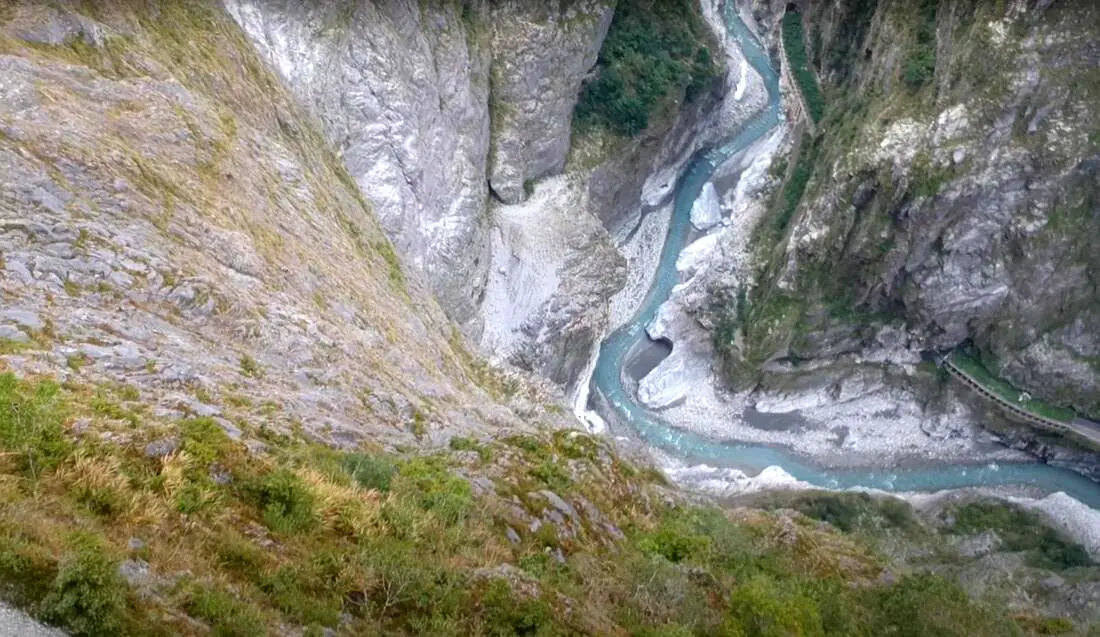
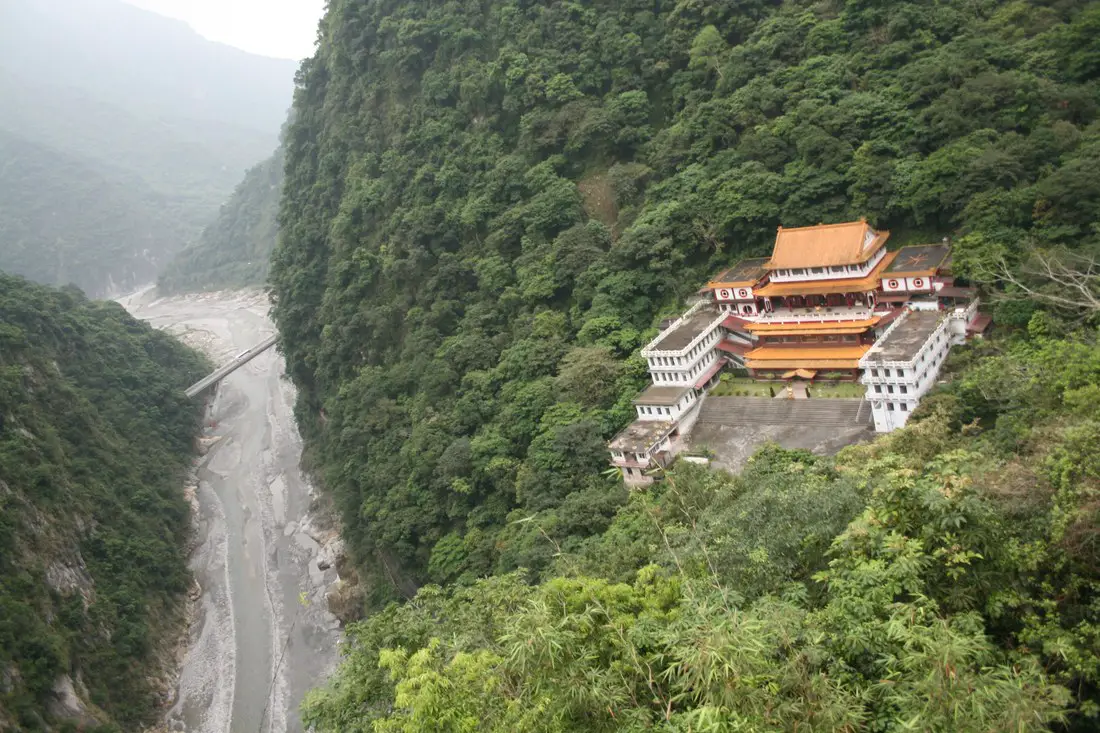
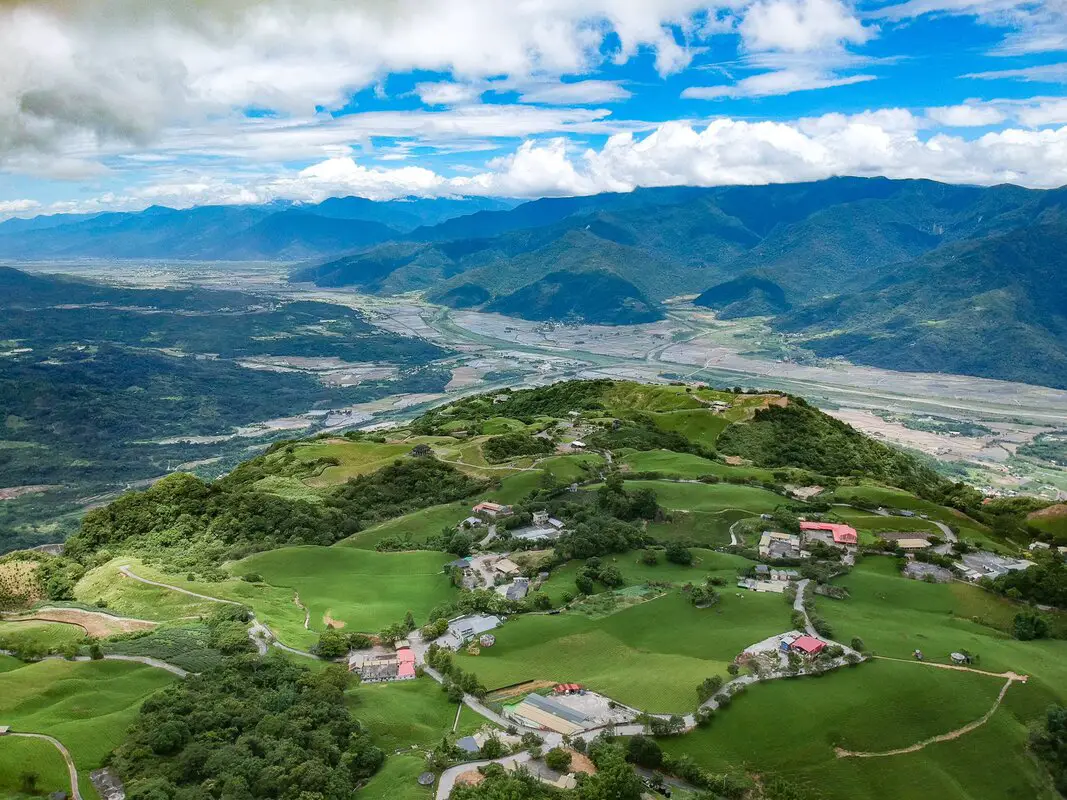
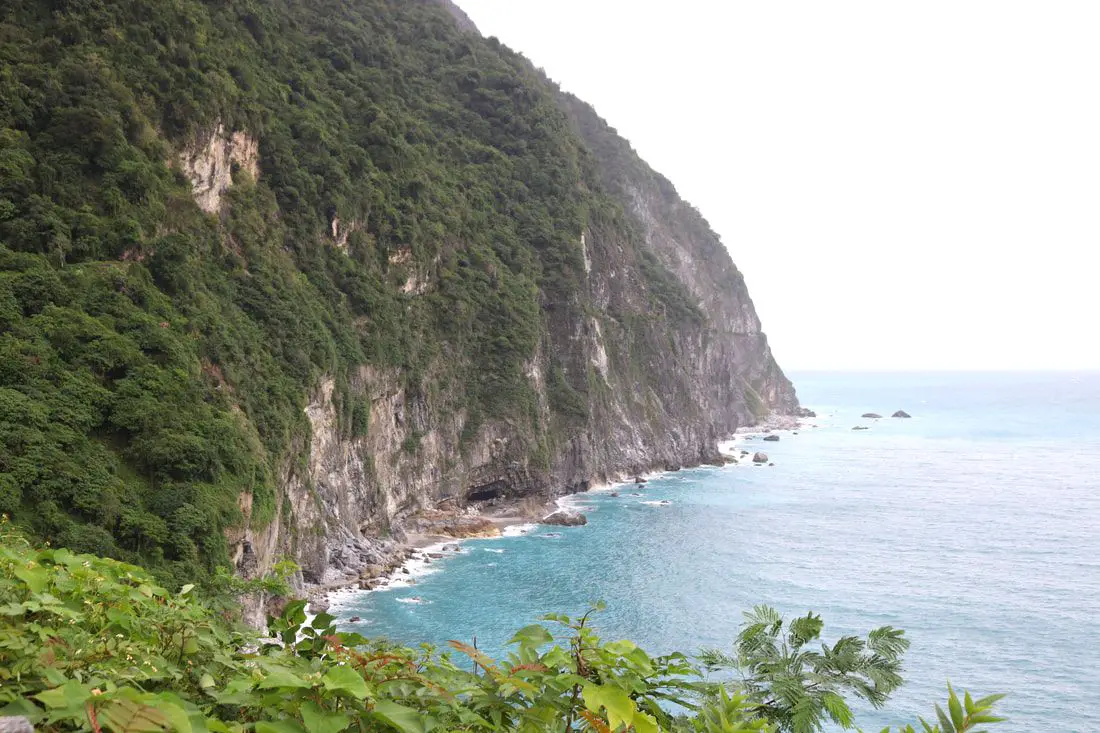
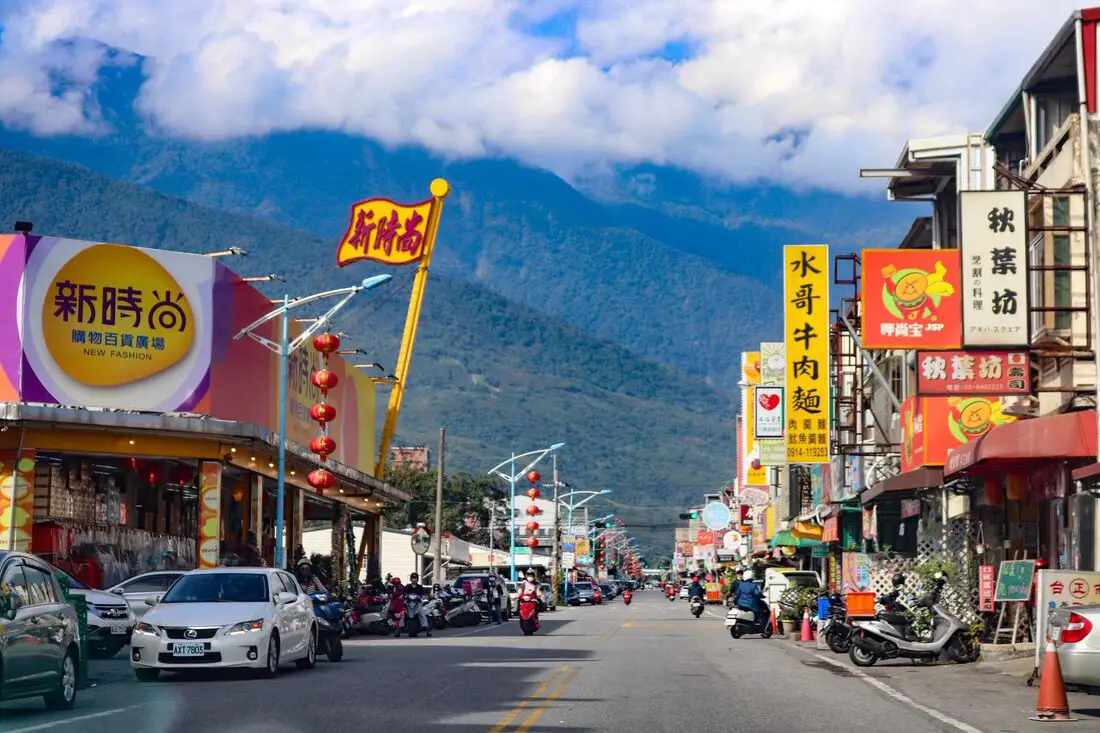
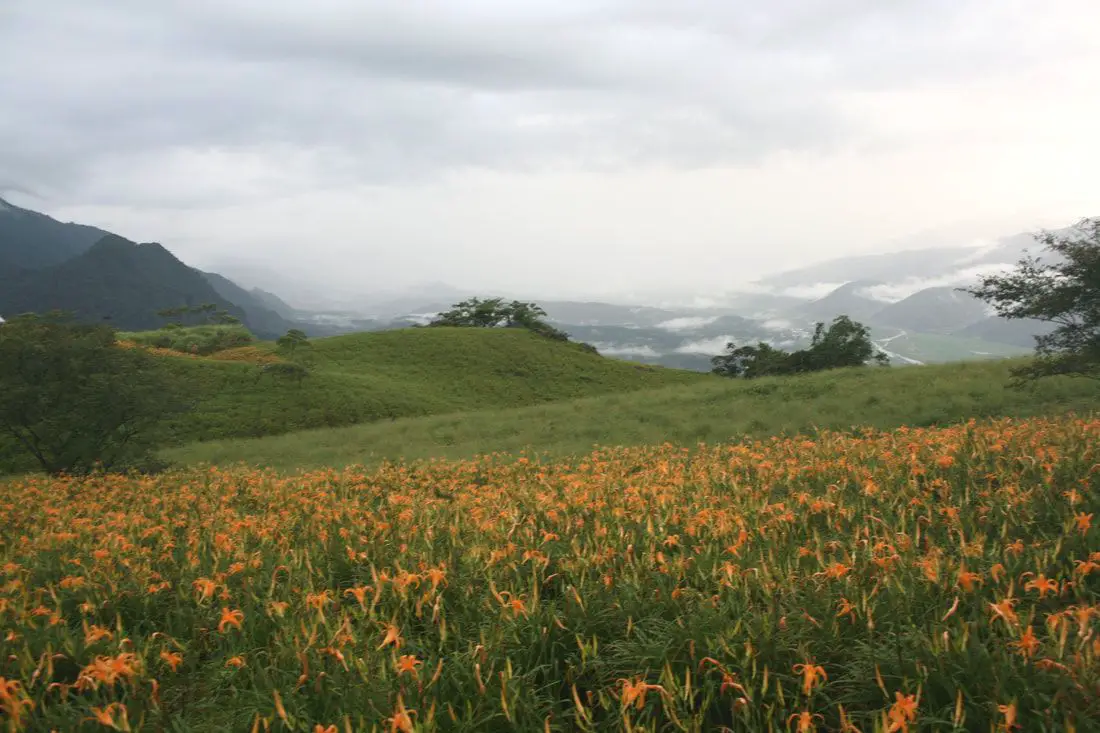

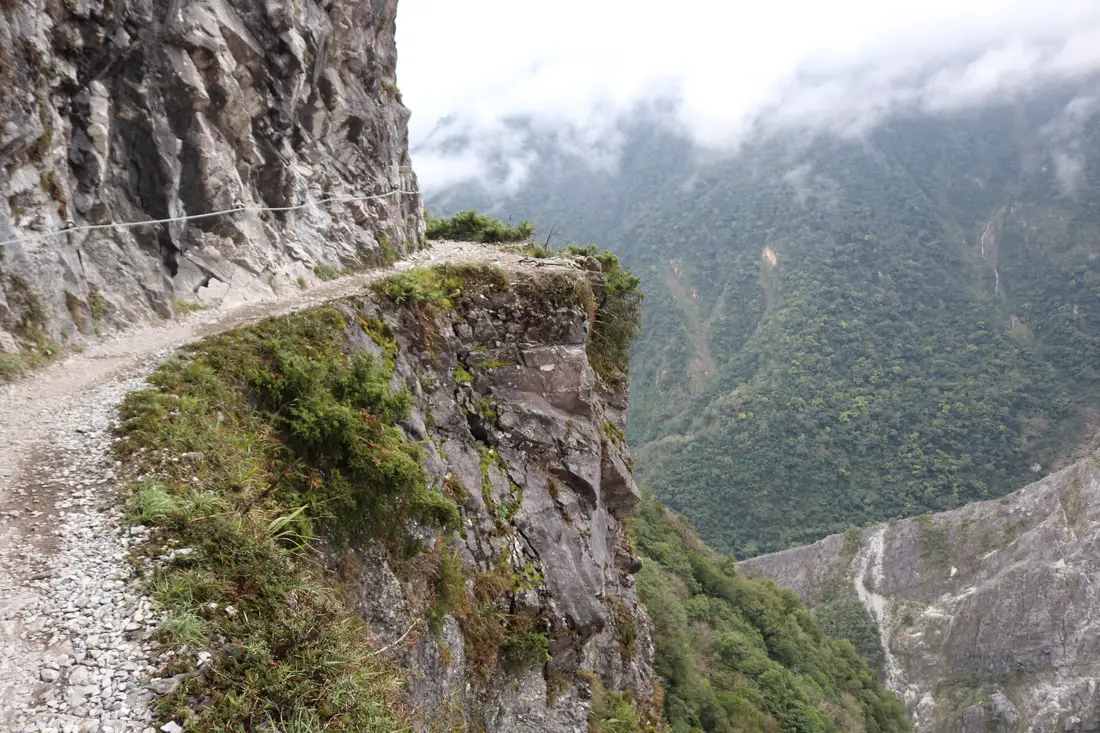

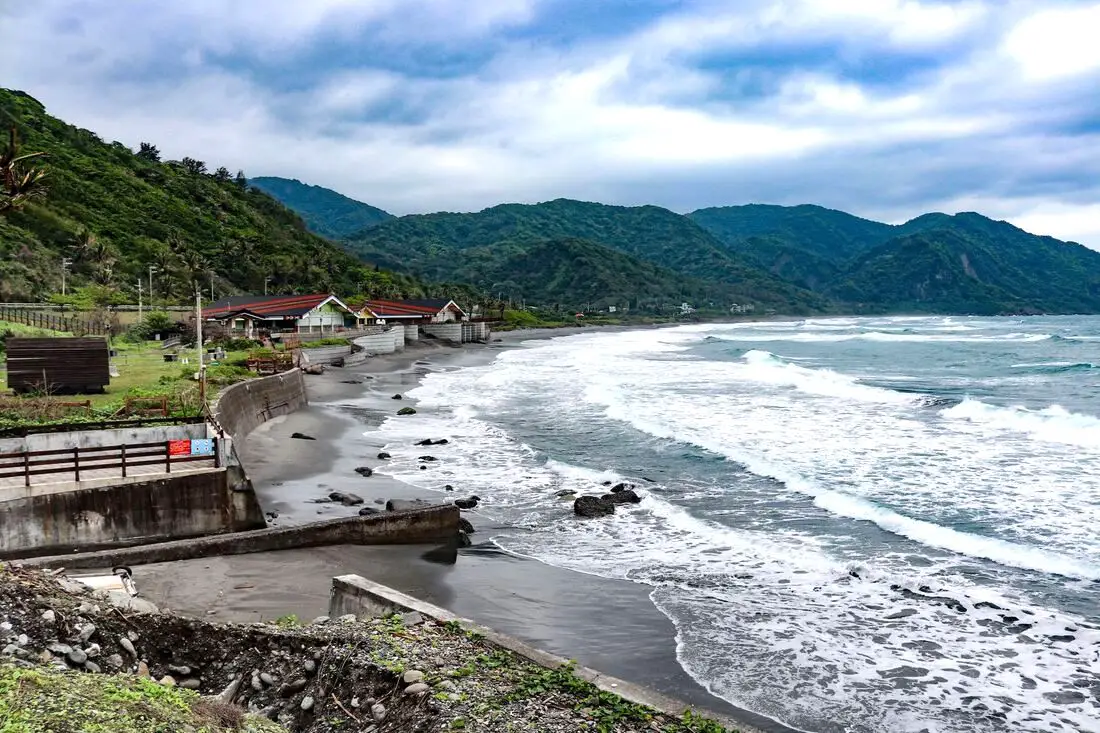
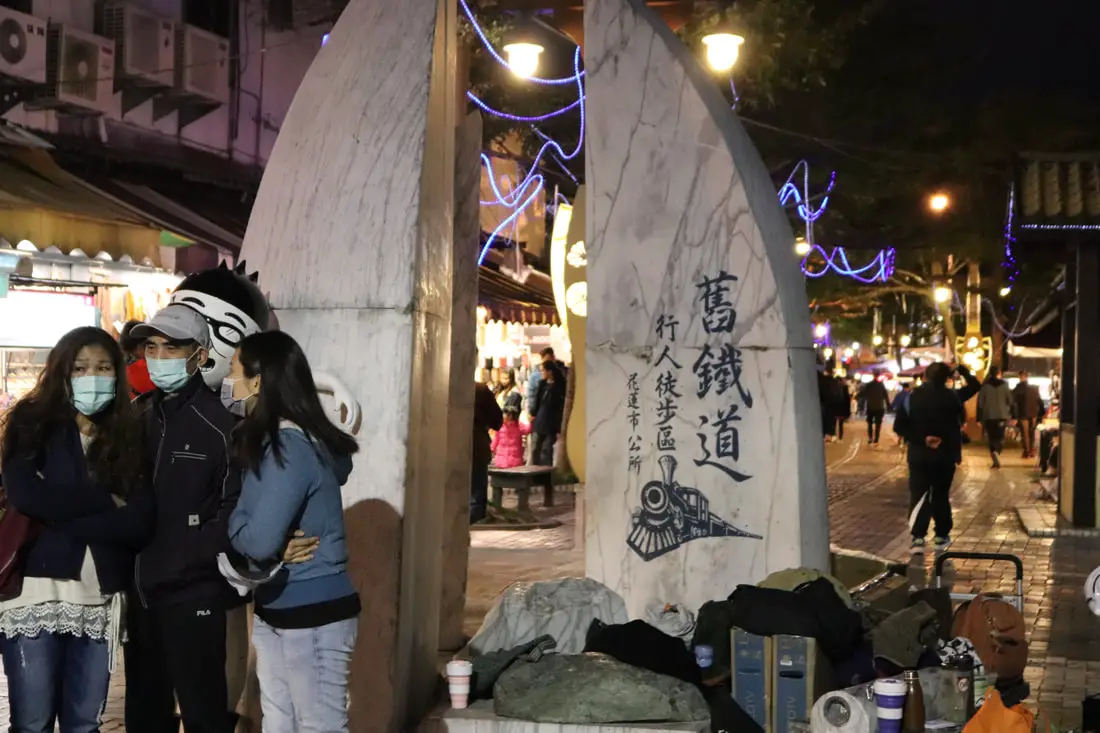
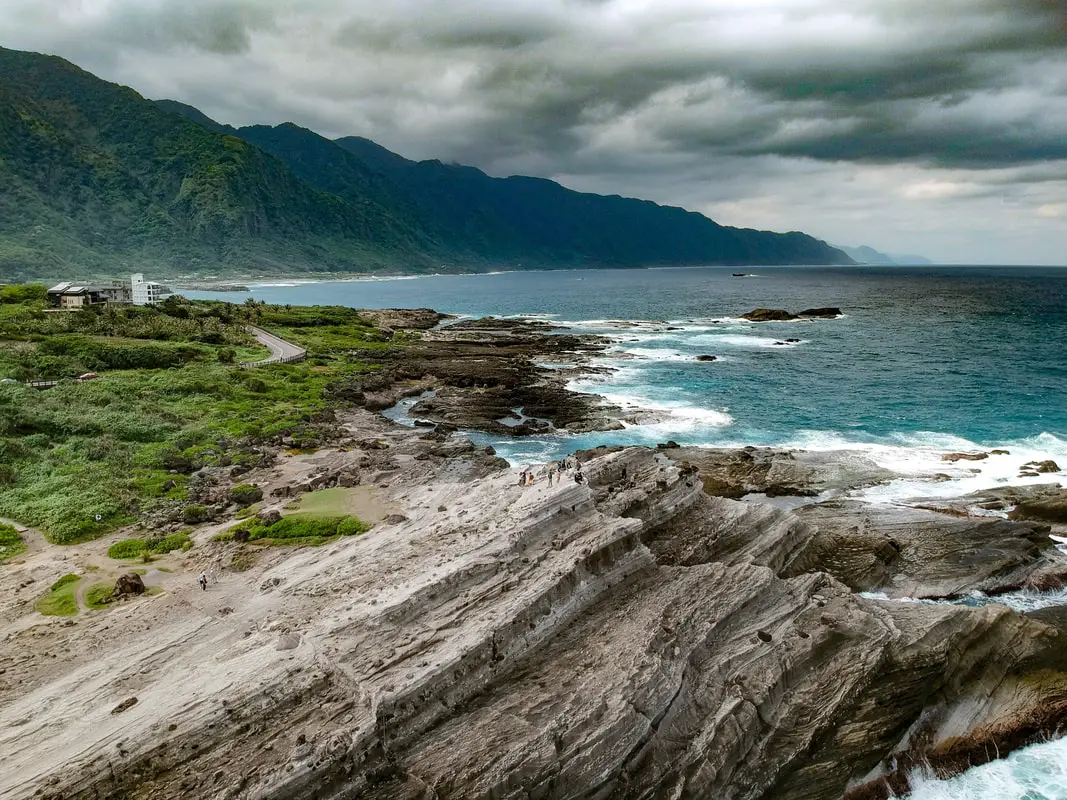
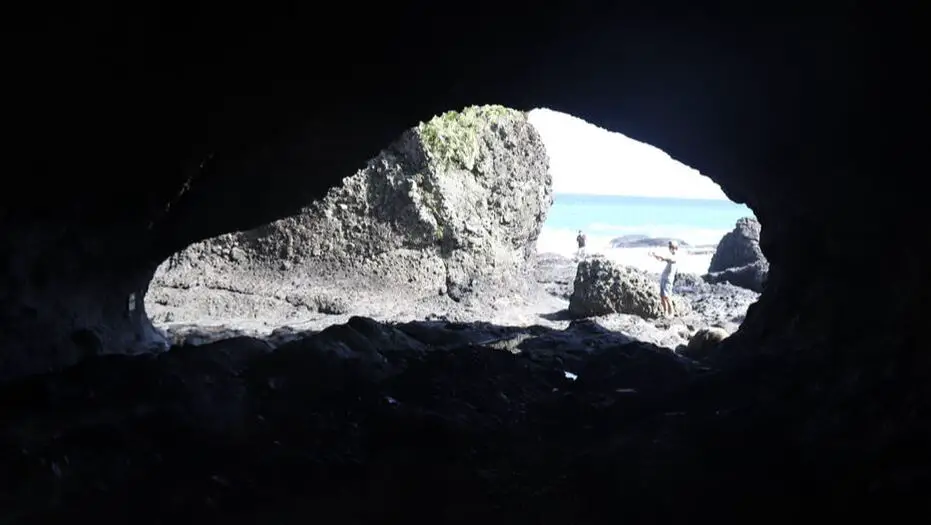
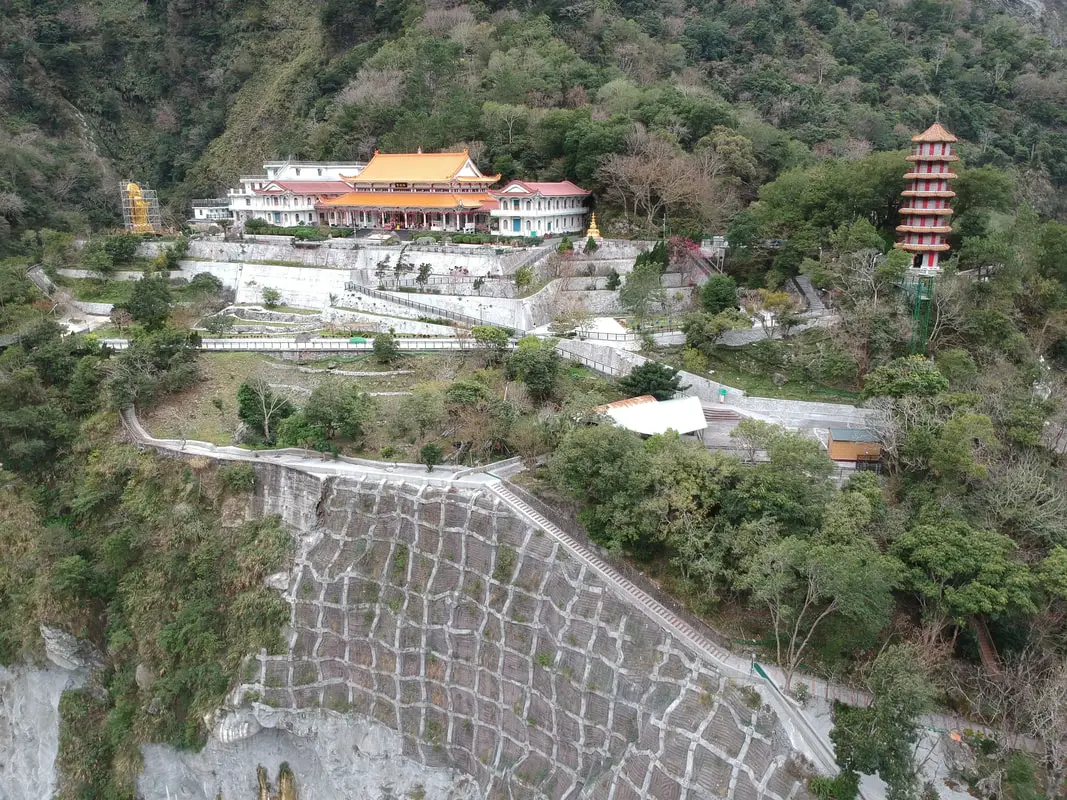
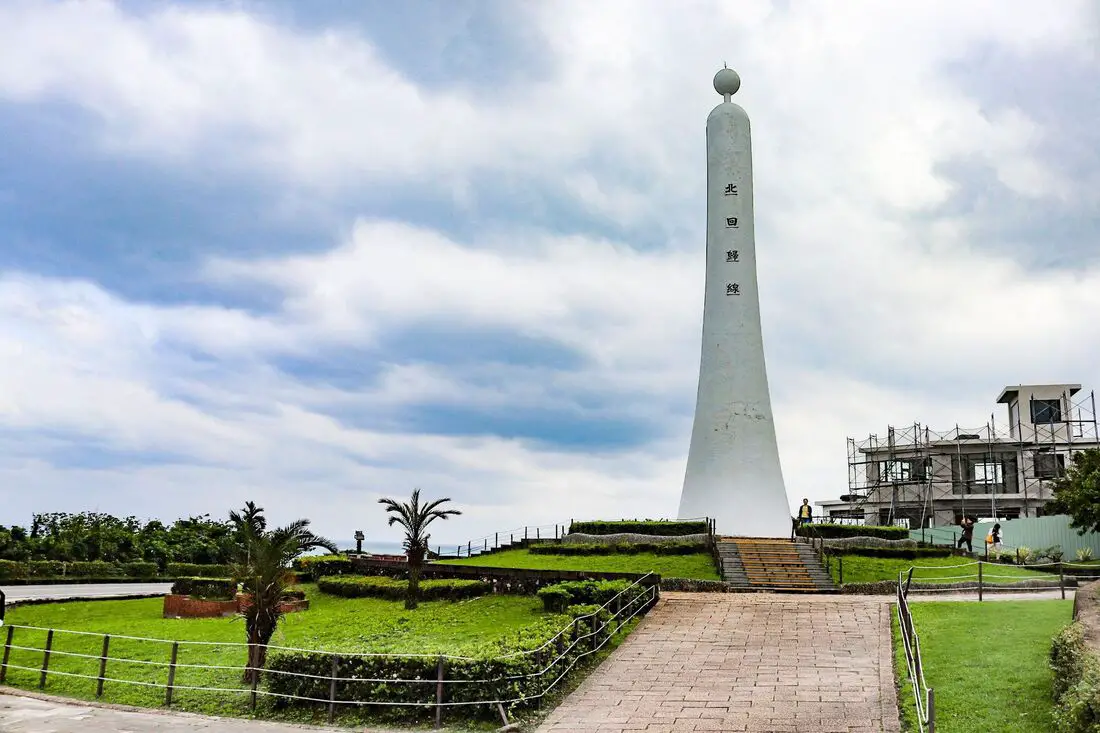
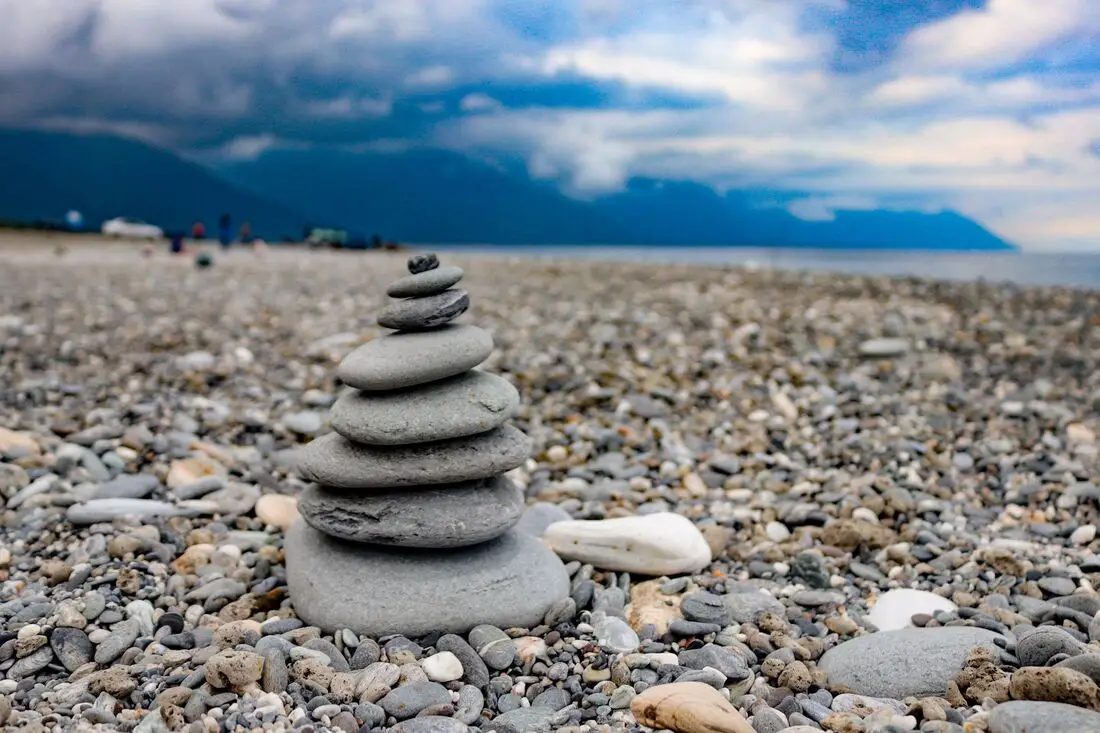
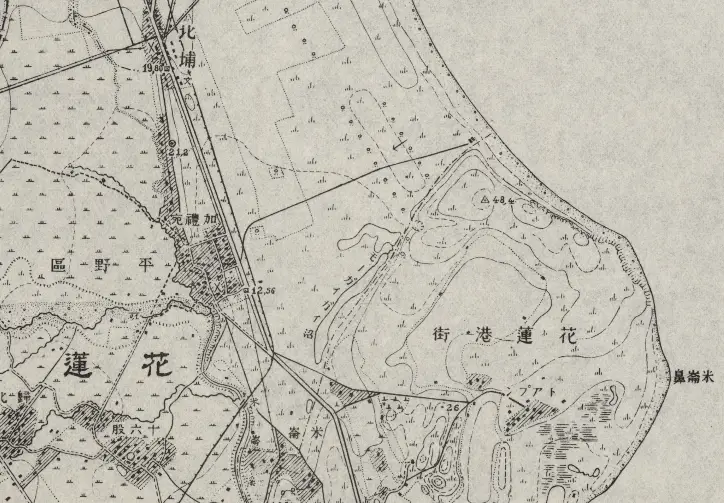
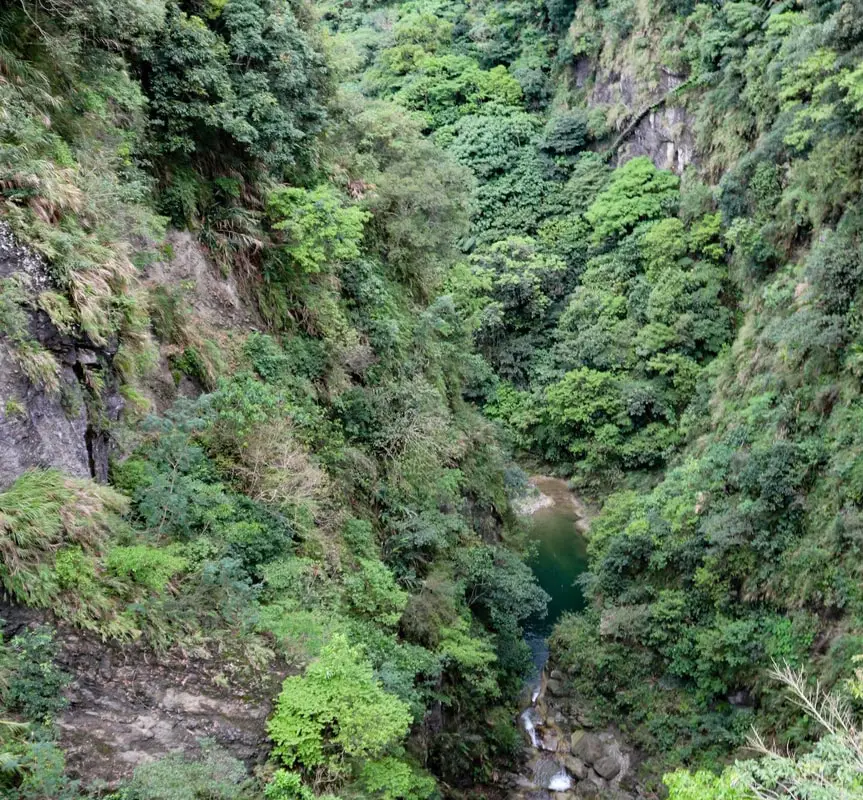
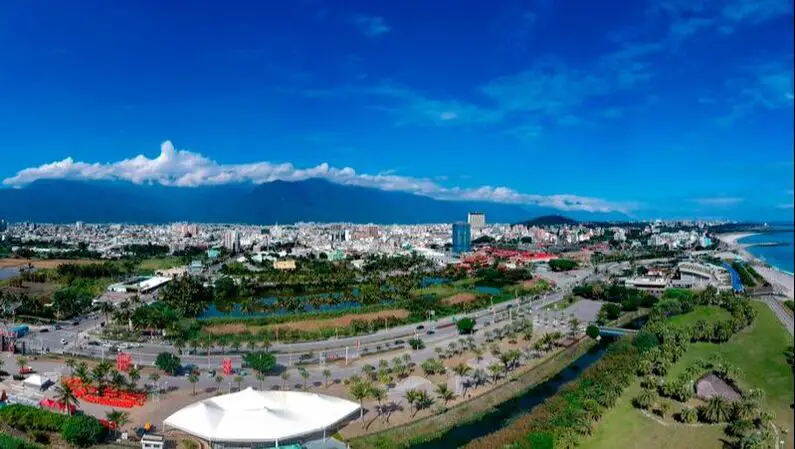
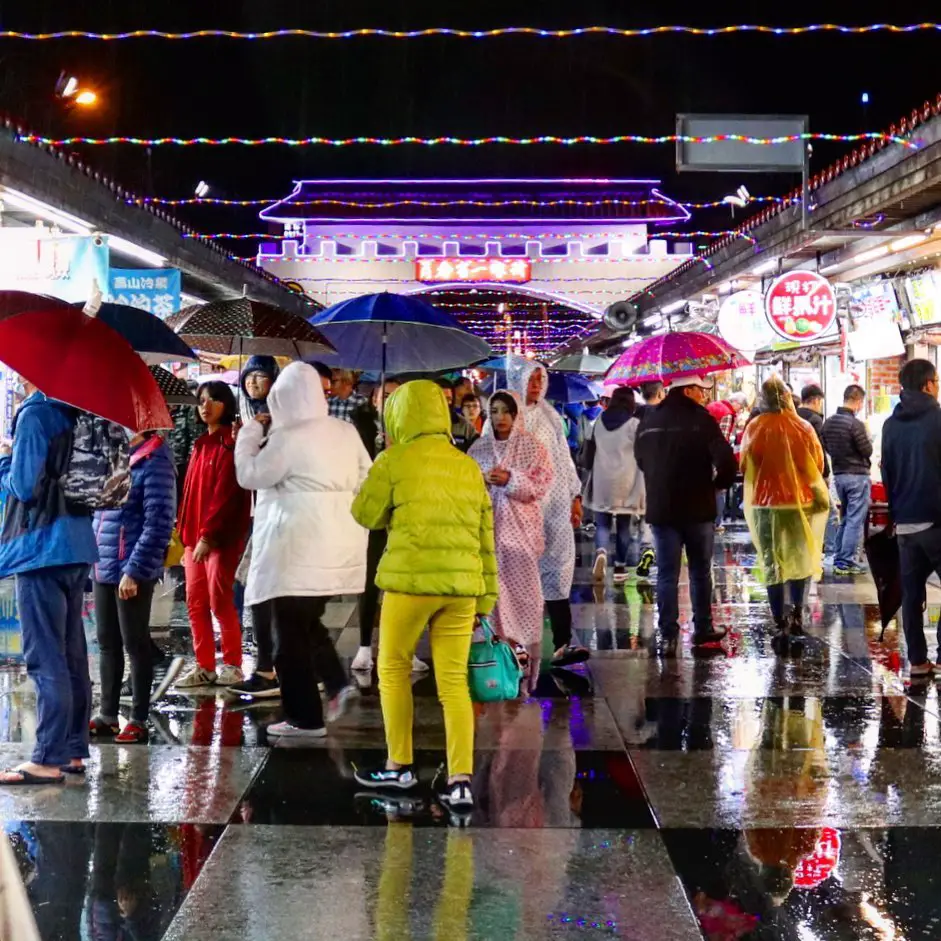
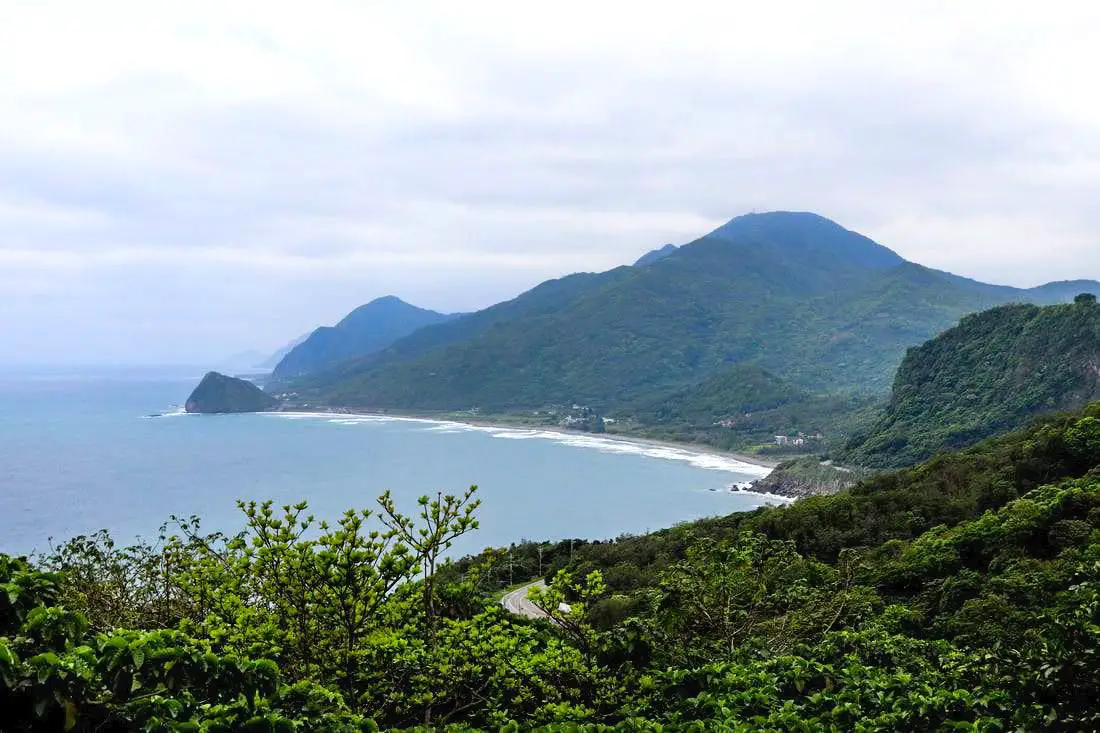
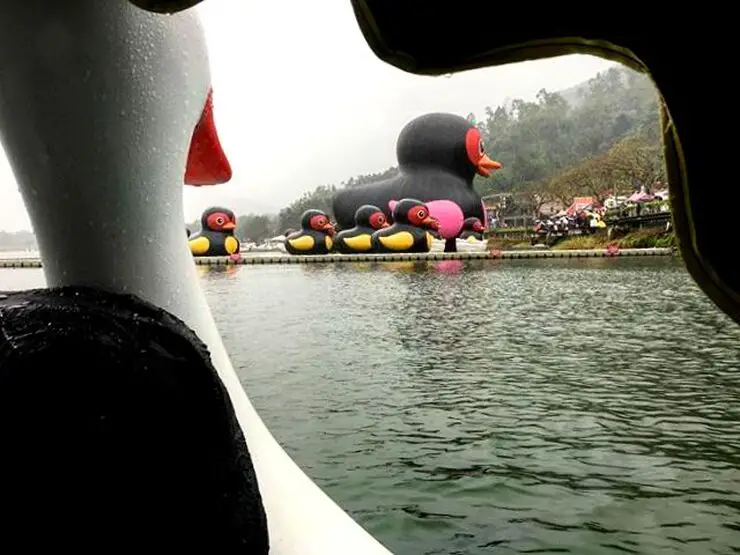
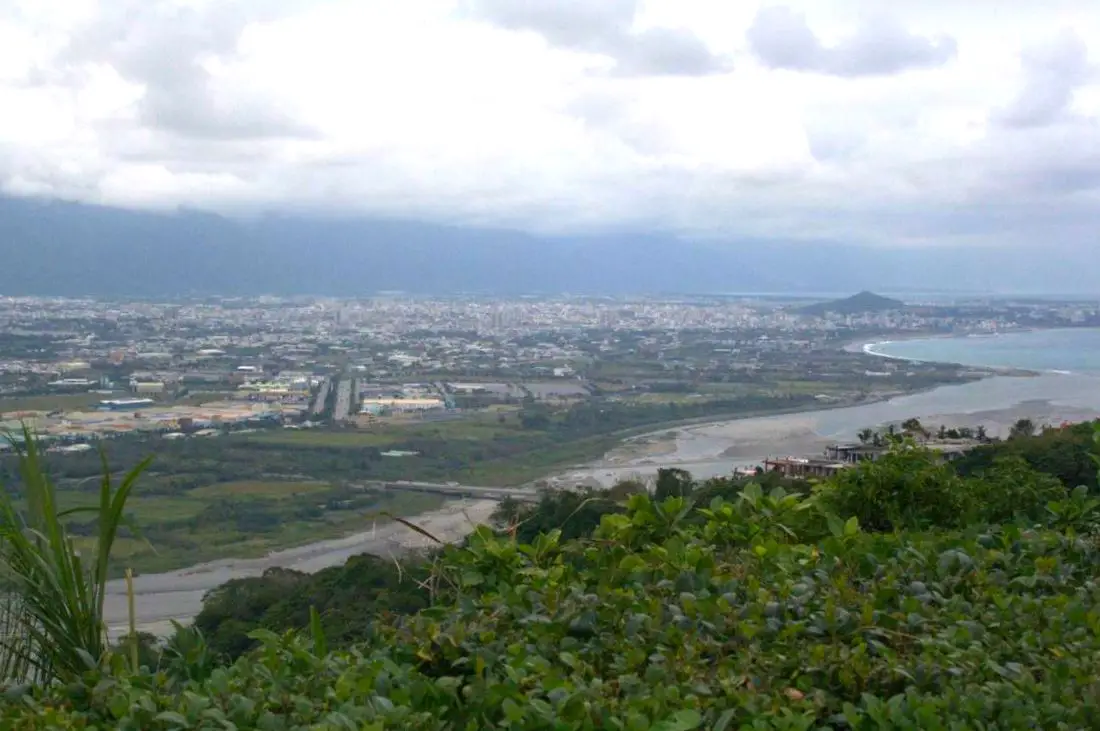
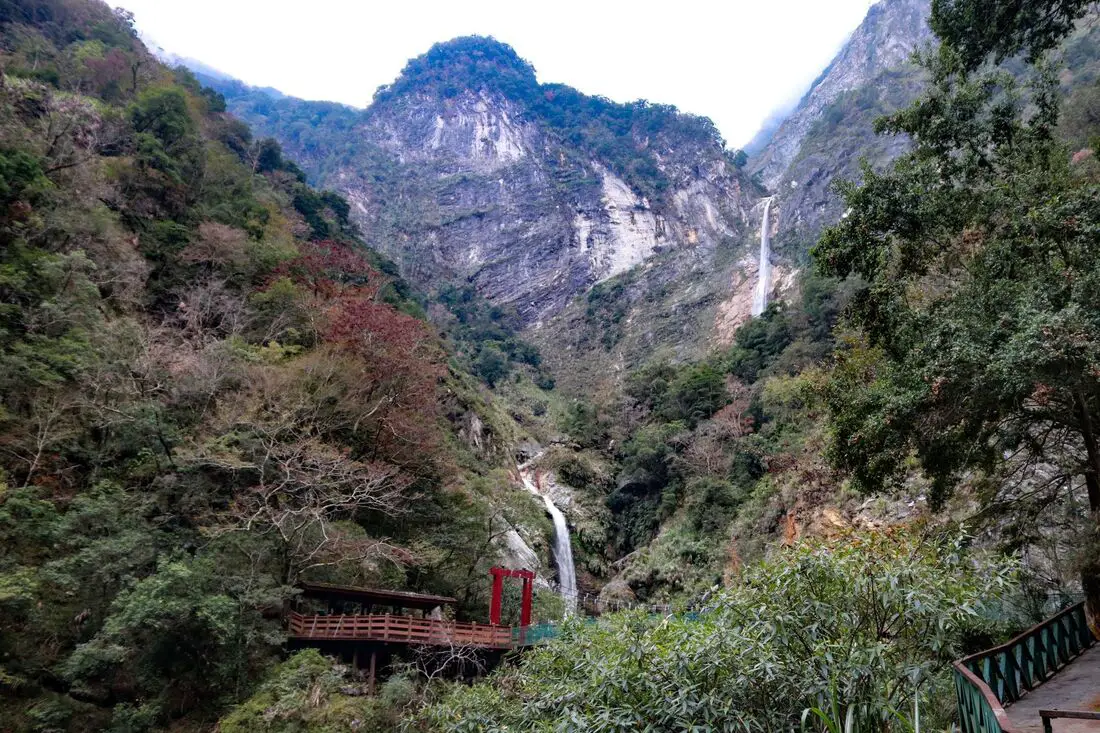
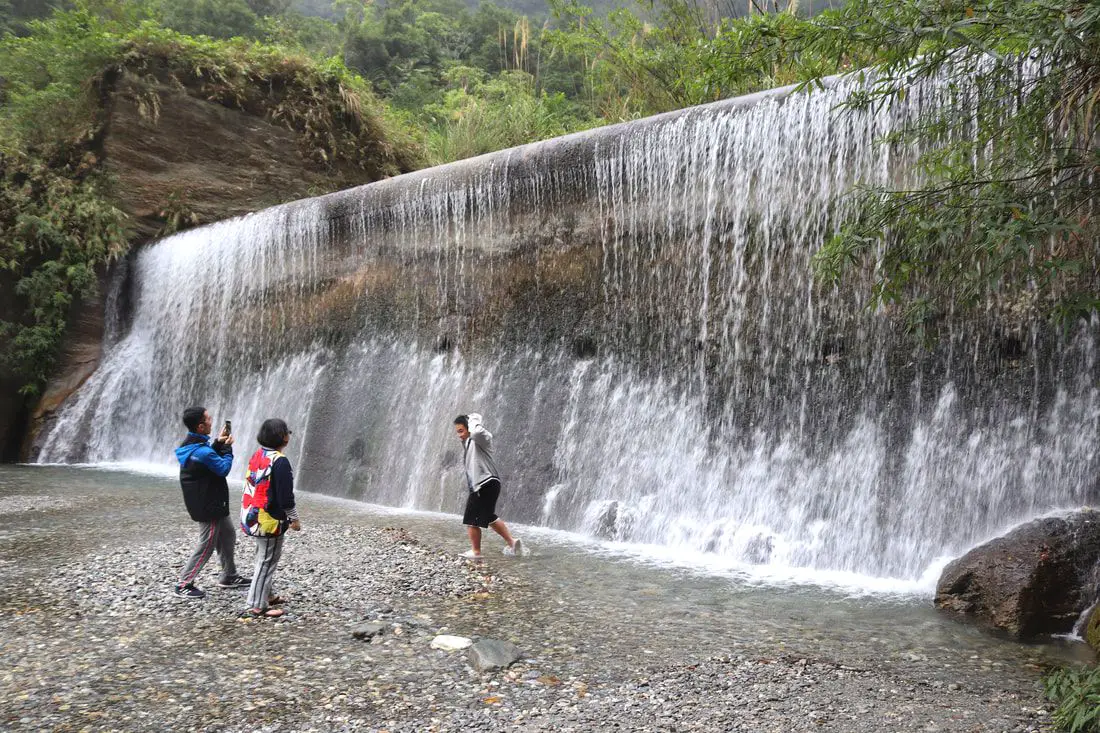
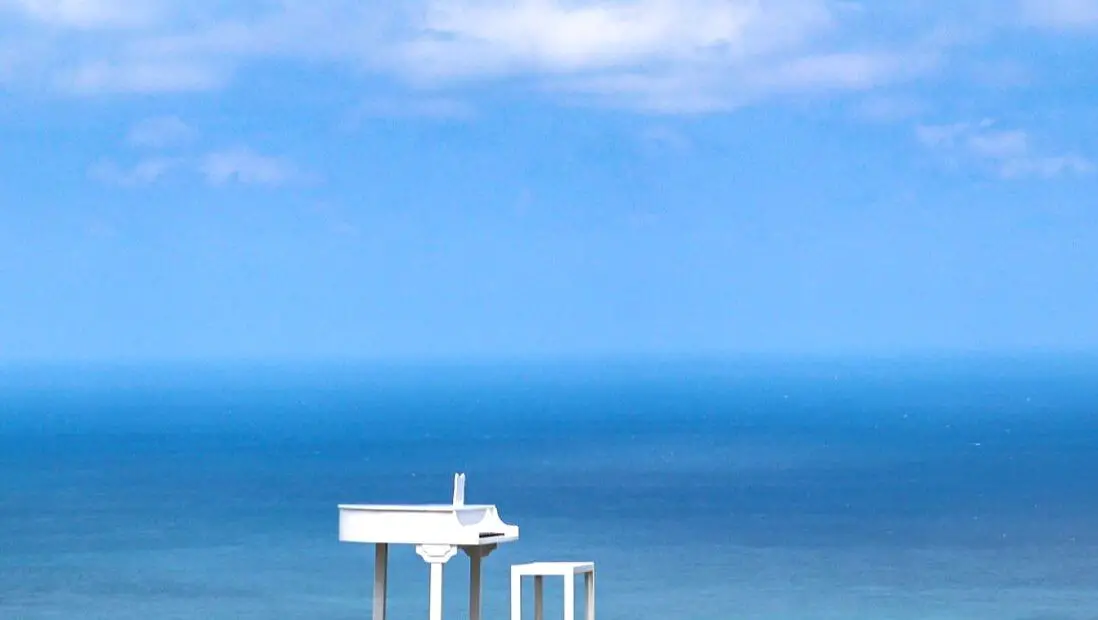
 RSS Feed
RSS Feed
